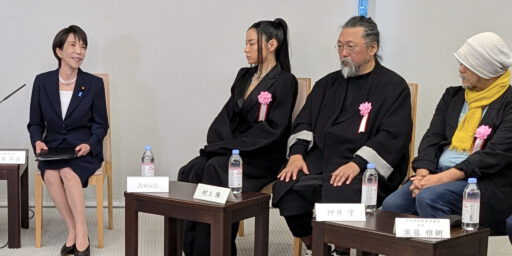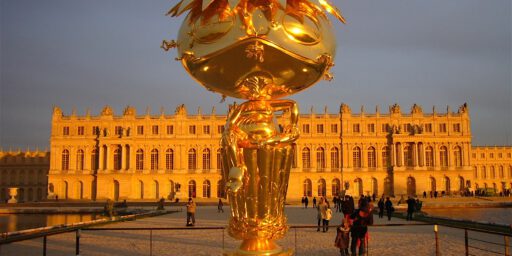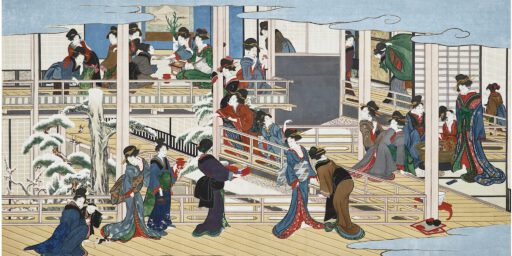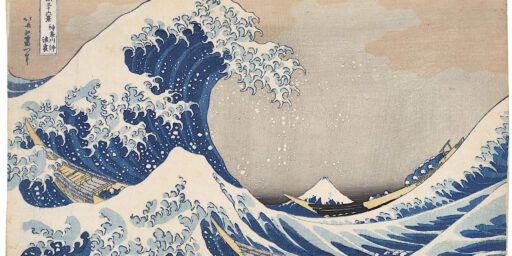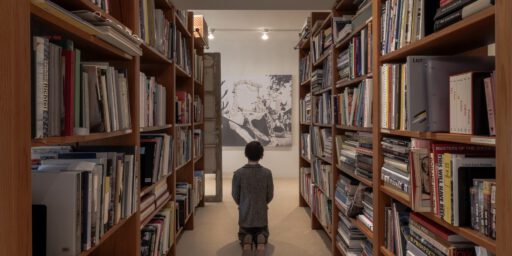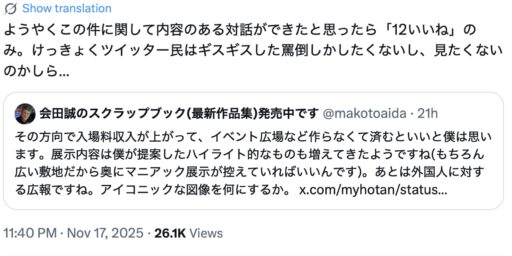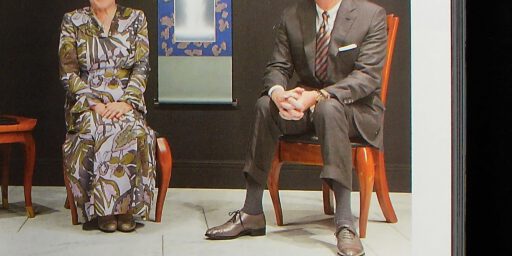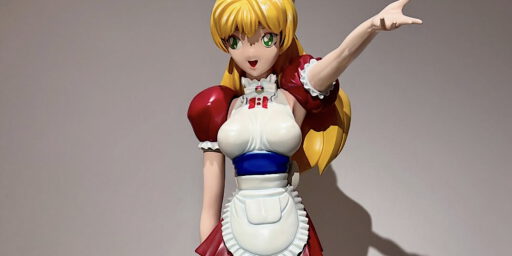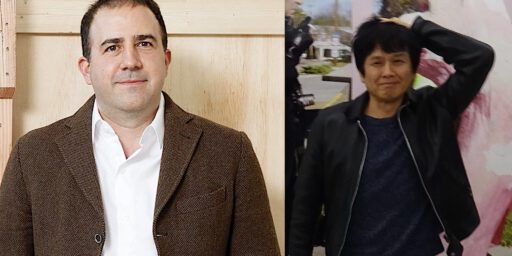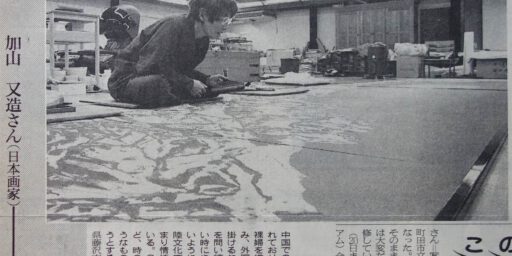世界一のアートディーラー、New York City ラリー・ガゴシアンを巡って World's No.1 Art Dealer, Larry Gagosian from New York City
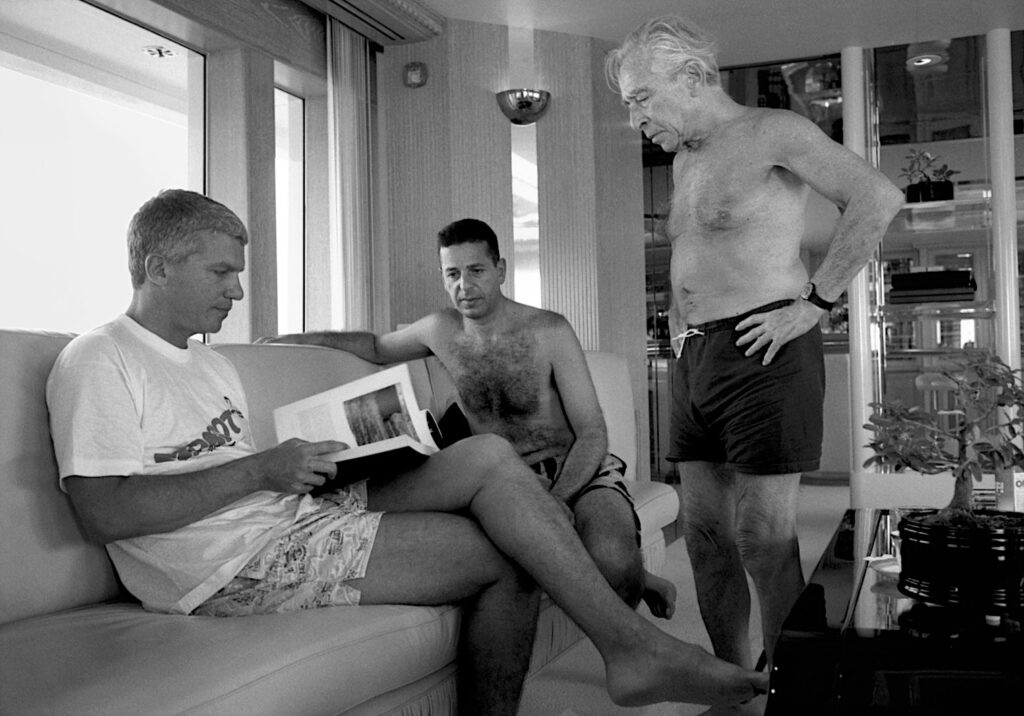
This is an extension of my past articles, which I, as a Japanese artist, published here on ART+CULTURE, see the links. It can be art-re-contextualized also as a body of work, still in progress. This text on this page has to be understood as part of my artistic practice, in this context called “appropriation art”. No commercial interests are involved. Creative Commons Attribution Noncommercial-NoDerivative Works. Photographs have to be understood under the terms of courtesy creative common sense.

一週間前、ラリー・ガゴシアンに関する長いレポートが掲載されました。その文章はウェブサイト上で無料公開されたので、アート界全体が知っています。
本音としてやりたくない、ガゴシアン氏について改めて書く気にはならないが、日本のART+CULTURE読者には、世界のアートシーンの最新情報を得るために、全文を知る権利があると思っています。仕方がありません。
ラリー・ガゴシアンについては、ここの読者のためにいろいろなコンステレーションでたびたび紹介してきました。私も個人的に彼を知っているが、あくまで表面的なものです。ガゴシアン・ギャラリーが扱っている日本人アーティストで最もよく知られているのは、村上隆。

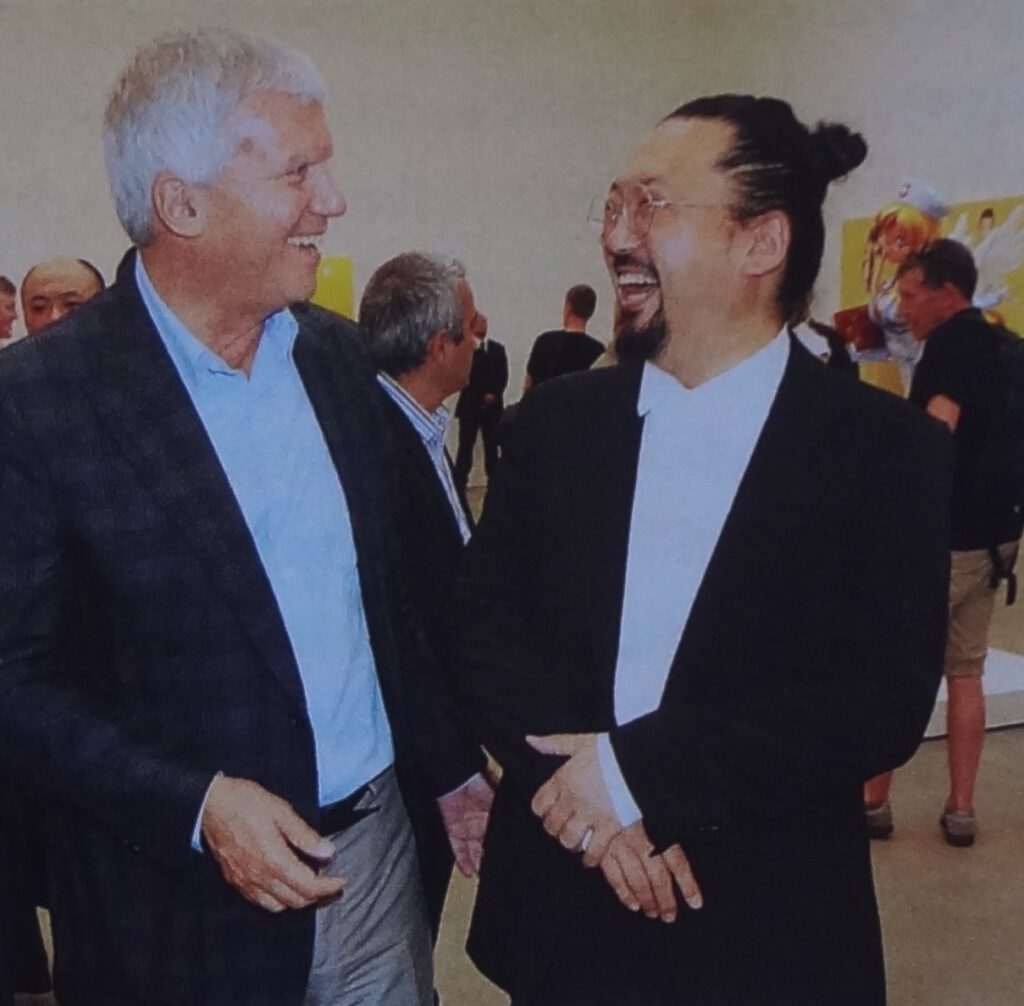
読者が簡単に概要を理解できるように、新しいテキスト(アプロプリエーション・アートとして)の前に、他のART+CULTUREのテキストをここにまとめて掲載させていただきます。
簡単に画商の仕事の説明で、作品を安く仕入れて高く転売することであり、ディーラーとクライアントの間で取引が行われ、お金と品物のごく単純な交換です。
ガゴシアン氏がニューヨークという都市を選んだ理由と言えるのは、ここが世界の証券取引所の中心地、証券取引界のエリートが集まっています。当然、米ドルは世界で最も重要な取引通貨です。
商売根性はすごくて、24時間365日、アート・ディーリング仕事のために生きています。
親しい友人はもういないようで、常に恋人を変えています。

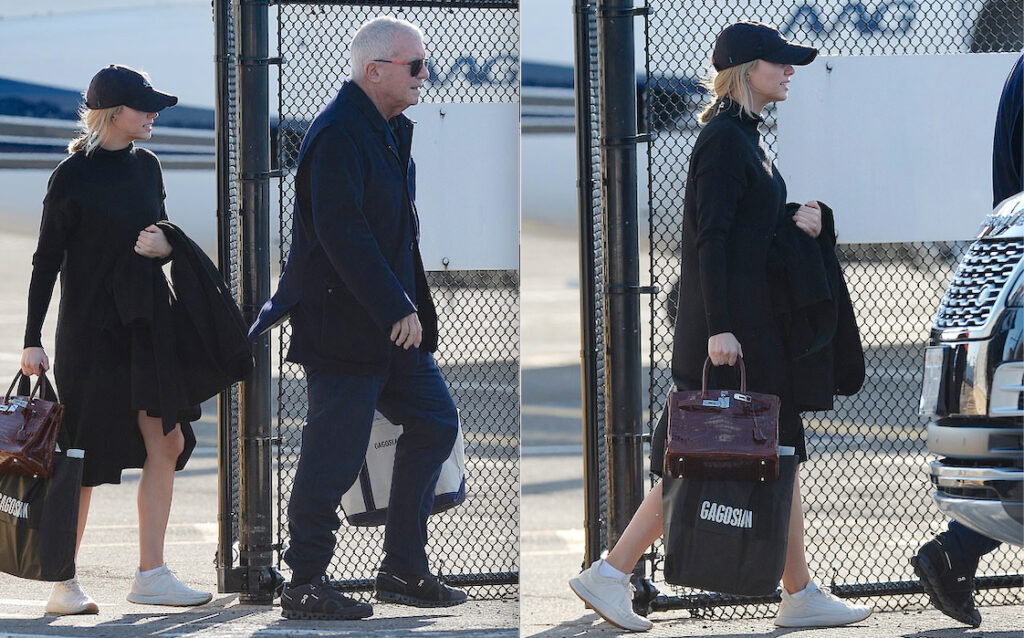

アーティ・パワープレイ:画家アンナ・ウェイアント (27) とラリー・ガゴシアン (77) の「交際中」
Arty Power-Play: Painter Anna Weyant (27) “is dating” Larry Gagosian (77)
https://art-culture.world/articles/larry-gagosian-anna-weyant/
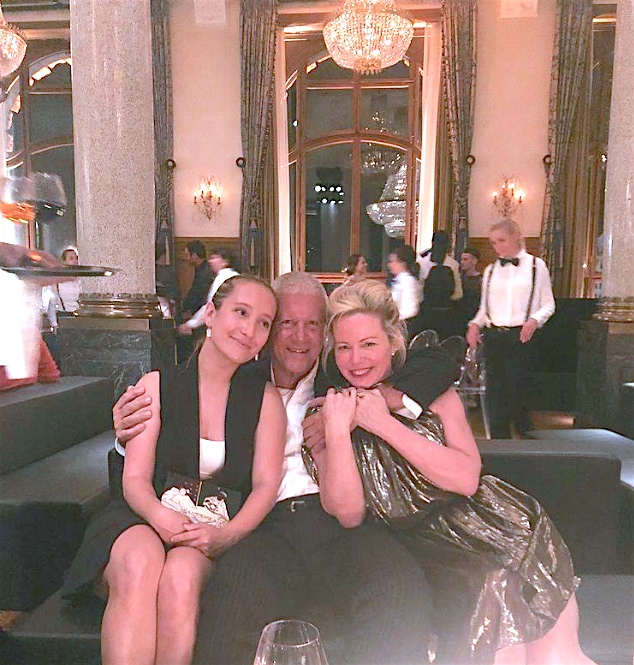
夏休み中でさえ、アートコレクターと会える場所を選んで取引をしています。
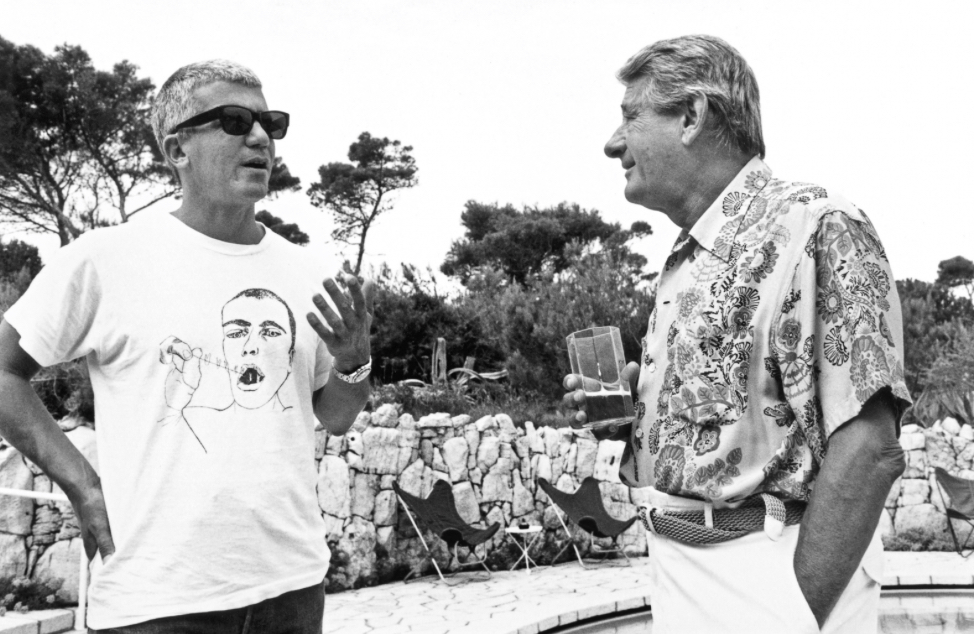
マンハッタンの高級マンションでは、ニューヨークのエリート達の為にパーティーを開き、壁に掛けられている作品も販売しています。
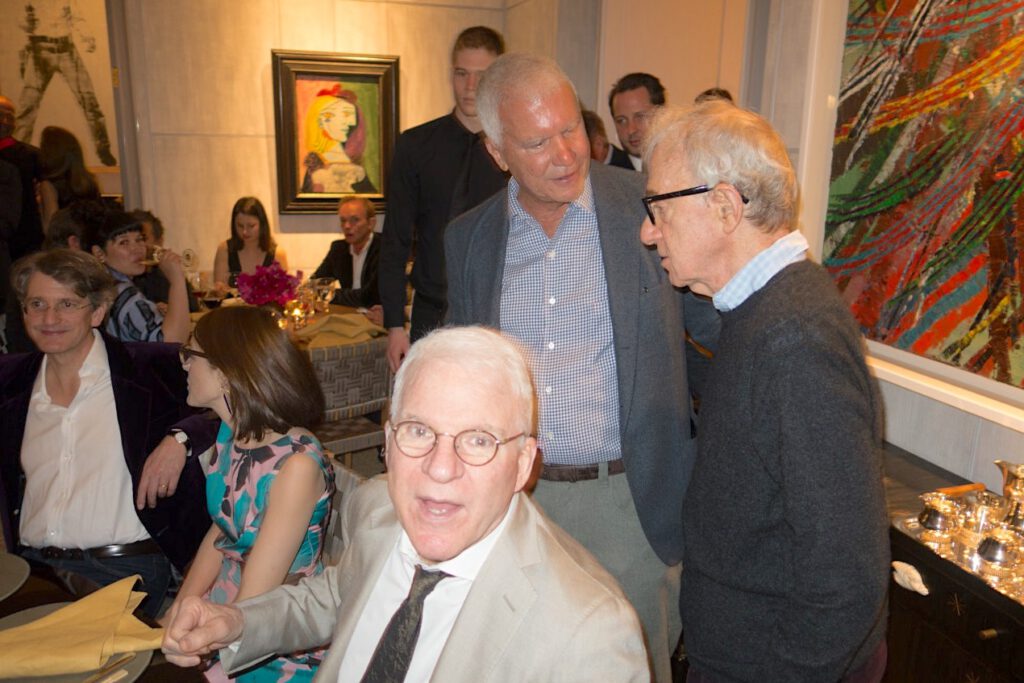
Obvious bribery favouritism and cozy relationship through paintings. A New York Museum Director attending the private party by art dealer Larry Gagosian in Manhattan. Left, sitting: Thomas P. Campbell, Director and CEO of The Metropolitan Museum of Art in New York. (2016, when above photograph had been taken)

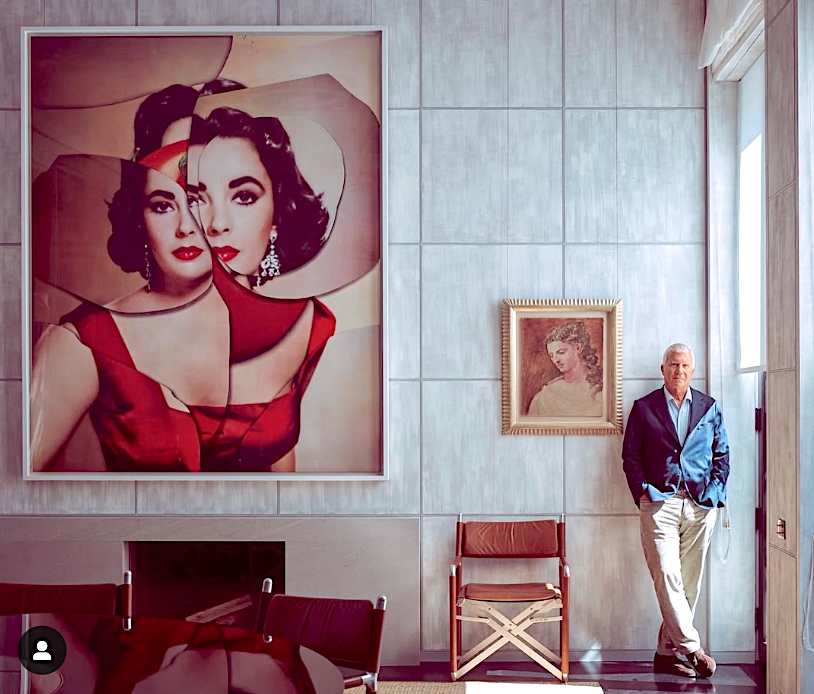
信頼できるコレクター又はアートディーラー (Mugrabi, Segalot, Deitch)とともに、彼のアーティスト達をオークションで押し上げたり、買い戻したりします。戦略的に、art market の market makerであると言えるでしょう。これにより、オークションハウスとアートディーラーの間に「癒着関係」が生まれ、元クリスティーズ共同会長のロイック・グゼール Loïc Gouzerの最新コメントを参考へ。
アート・バーゼルのガゴシアン・ブースではクリスティーズが作品を販売しています。 Willem de Kooning’s Untitled III (around 1978) のケースを参考へ。
さらに、ガゴシアンは、雑誌や新聞に事前にレビューを発表する「有料ライター」を多数抱えています。
ガゴシアンがアート業界で最高のパブリシストを雇うのは、ある意味当然のことなのでは?
It’s kind of a no brainer that Gagosian pays for the best publicists in the art business?
“Bribed” journalism at Wall Street Journal: Gagosian pushing up Grotjahn for U.S. Art Flippers, 6 days before the exhibition
https://art-culture.world/articles/gagosian-grotjahn-for-u-s-art-flippers/
そして、Gagosian Art Advisoryを通じて、複雑な事情を持つ国際アート・マーケットや収集方法について助言する会社である。
以下の文章がこれからアップデートされ、deepl.comなどで、お読みになってくださいませ。
GAGOSIAN
https://gagosian.com
Locations: (as of 2023/7/29)
1. 980 Madison Avenue, New York
2. 976 Madison Avenue, New York
3. Park & 75, New York
4. 555 West 24th Street, New York
5. 541 West 24th Street, New York
6. West 21st Street, New York
7. Beverly Hills
8. Gagosian at Marciano Art Foundation, Los Angeles
9. Grosvenor Hill, London
10. Davies Street, London
11. rue de Ponthieu, Paris
12. rue de Castiglione, Paris
13. Le Bourget
14. Geneva
15. Basel
16. Gstaad
17. Rome
18. Athens
19. Hong Kong
20. Gagosian Shop, New York
21. Gagosian Shop, London
Gagosian Art Advisory
Specializing in curatorial advice, appraisals, collection management, industry intelligence, and market analysis, Gagosian Art Advisory offers professional guidance to collectors in all aspects of acquiring fine art, as well as building and refining collections.
Drawing on our specialist expertise and extensive networks of artists, collectors, scholars, and institutions worldwide, our firm advises across the complexities of the international art market. We offer an innovative, client-focused approach in order to provide thoughtful and independent recommendations with the utmost discretion.
https://gagosianartadvisory.com
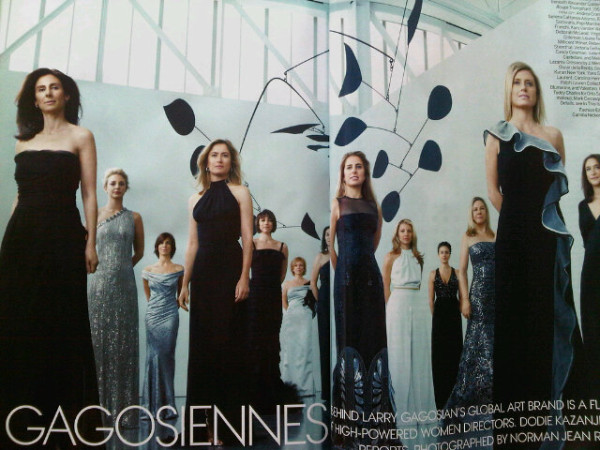
The Women of Larry Gagosian Get the Vogue Treatment
2011/09/23
The October issue of Vogue has a big piece about the “Gagosiennes,” dealer Larry Gagosian’s “fleet of high-powered women directors.” The article has not been posted online, but it is available on newsstands now.
To begin with, there is a two page photo of these women standing in Gagosian’s mammoth 24th Street branch beneath a large Calder mobile (this is somewhat misleading. Gagosian has done shows of Calder’s work, but he is not represented by the gallery; Calder is a part of the stable of Gagosian’s major competitor, The Pace Gallery). They are all wearing gowns by the likes of Oscar de la Renta, Yves Saint Laurent and Valentino. Some of them are smiling.
So, you ask, what is a Gagosienne? According to the article:
“To be a Gagosienne, you have to be ambitious, intelligent, well connected, socially adept, highly discreet, reachable at all times, stress-resistant, and mad about art. It also helps to speak several languages and to dress well…and it doesn’t hurt to be beautiful and come from an aristocratic family.”
Some other things we learned here: Mr. Gagosian claims to have been totally unaware of the fact that his female employees outnumber the men almost two to one.
“‘I’m not even aware of it,’ he says. ‘I guess you’re right. But there have always been a lot of talented women in the art world, women who run galleries and museums. Look at Peggy Guggenheim, Ileana Sonnabend, Paula Cooper. It’s never been a boys’ club, like most corporations.’”
We’ll gloss over Mr. Gagosian referring to the art world as a “corporation” in favor of directing you to Ms. Cooper’s words to The Observer on the subject of the scene’s social geography as a boys’ club.
Andrea Crane, who specializes in Impressionist and modern art at Gagosian, had this to say about her boss:
“Larry is totally gender unspecific.”
Mr. Gagosian had this to say about the female gender:
“The problem with women is they keep getting pregnant.”
(Admittedly, this quote is attributed as being spoken in a “half-joking” tone. It doesn’t help, however, that he follows up the statement by saying, “There are all these maternity leaves, one after the other, and it does create a certain amount of tension.”)
The article stresses that Mr. Gagosian rewards his employees lavishly for their hardwork, but it also points out some of the absurdities of life on the job. Speaking of Valentina Castellani, who according to the article is “closer to Larry than anyone else on staff,” the reporter recounts:
“She had turned off her BlackBerry for the interview. When we finished and she turned it back on, Larry had called seven times. And when she got back to the office, she learned that he had called her husband to find out where she was.”
The conclusion here is: “It sounds a little like the CIA—or a posse of intellectual Bond Girls.”
If that’s true, is Mr. Gagosian James Bond or Ernst Blofeld?
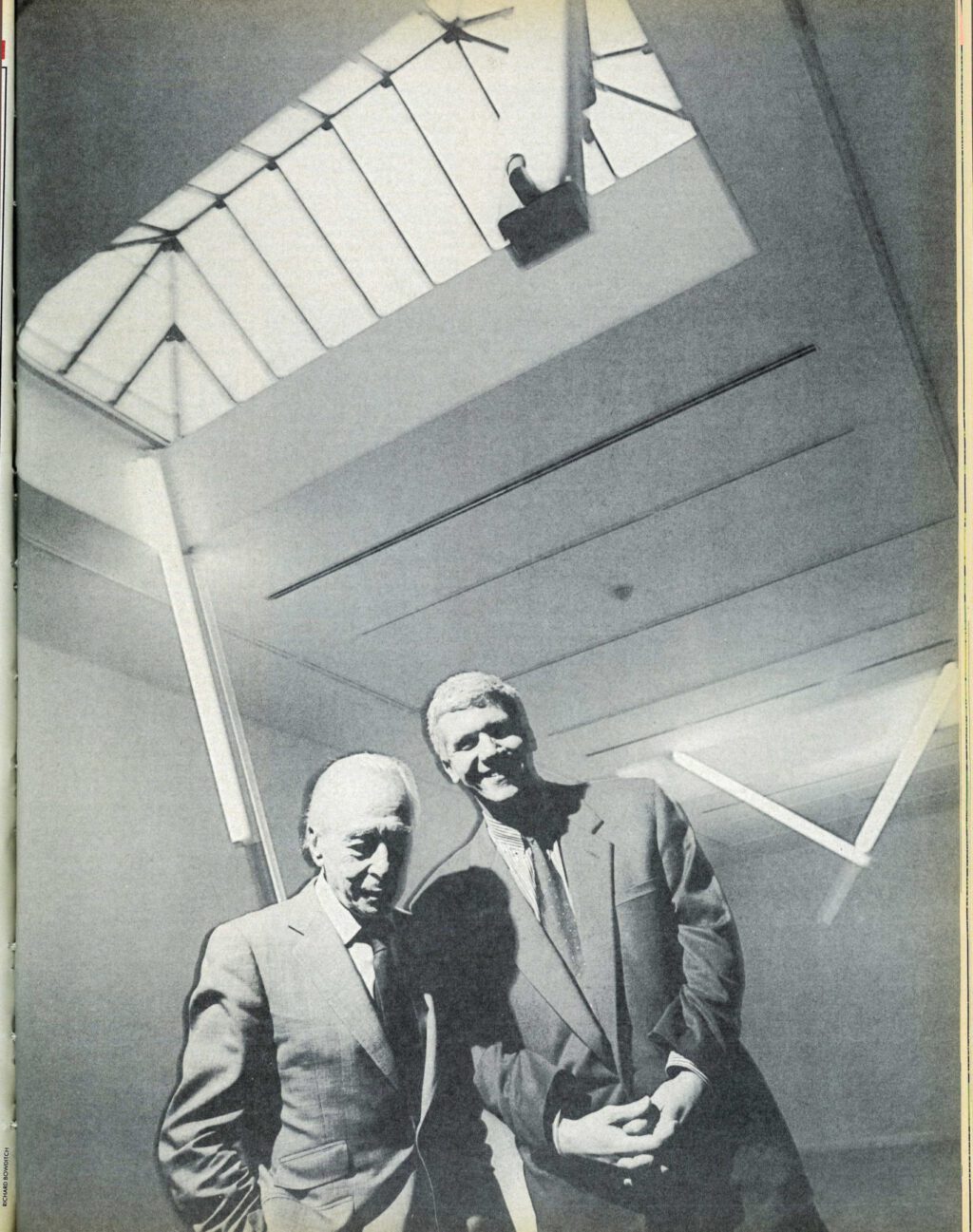

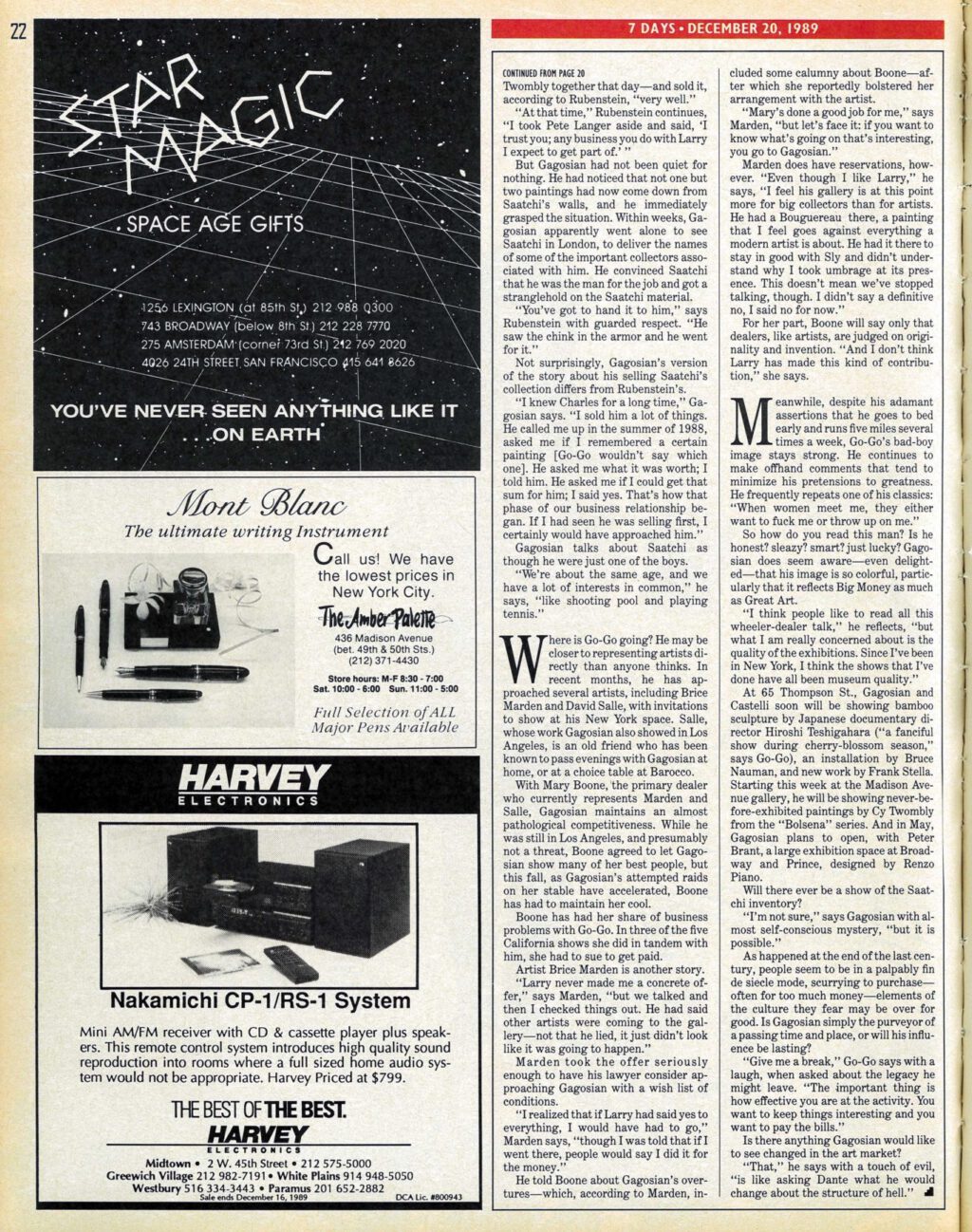
This is an extension of my past articles, which I, as a Japanese artist, published here on ART+CULTURE, see the links. It can be art-re-contextualized also as a body of work, still in progress. This text on this page has to be understood as part of my artistic practice, in this context called “appropriation art”. No commercial interests are involved. Creative Commons Attribution Noncommercial-NoDerivative Works. Photographs have to be understood under the terms of courtesy creative common sense.
2019/4/12
7 Days: Larry Gagosian, Art’s Bad Boy
He came to New York and got Charles Saatchi to sell some paintings. He wooed Leo Castelli and is getting awfully friendly with his artists. He has a “past,” a future, and a slick wardrobe. He’s Larry Gagosian, the man the art world loves to hate.
quote:
What does he actually do? Gagosian’s a human perpetual-motion machine. When it comes to a painting he knows he wants to sell, he demonstrates almost unyielding tenacity with both the original owner and the prospective quyer. He makes hundreds of calls a day — from his office, his home, his car. To catch up with Gagosian on his car phone when the line begins to fade is to find Gagosian talking relentlessly through the static. (“The phone is Larry’s weapon of choice,” a fellow dealer suggests.) No wonder they call him Go-Go.
Day in and day out, he hangs on the wire, offering vast amounts to collectors like Newhouse, MoMA board member Agnes Gund, and Wall Street wizard Robert Mnuchin for their pictures. Not taking no for an answer is almost a game for him.
quote:
In 1985, almost out of thin air, he managed to pry some important paintings from a number of hotly desired collections, the most notable of which was that of Burton and Emily Tremaine. The Tremaines had assembled a major group of contemporary and modern works, including Jasper Johns’ iconographic White Flag. Other dealers had been dancing around the Tremaines. Gagosian was more direct.
“I looked up their phone number from Connecticut information,” he says. “I offered them a lot of money for a Brice Marden painting. Mrs. Tremaine liked me on the phone; she thought I was funny. Or maybe she liked the money I offered for the painting.”
quote:
Castelli is still sharp — although many art aficionados think that the only sign of Leo slipping is his recent and growing association with Larry Gagosian. Castelli is well-known for helping younger dealers get started (like Deborah Sharpe and Pat Hearn), but his relationship with Gagosian includes a business partnership, which was unprecedented for Castelli.
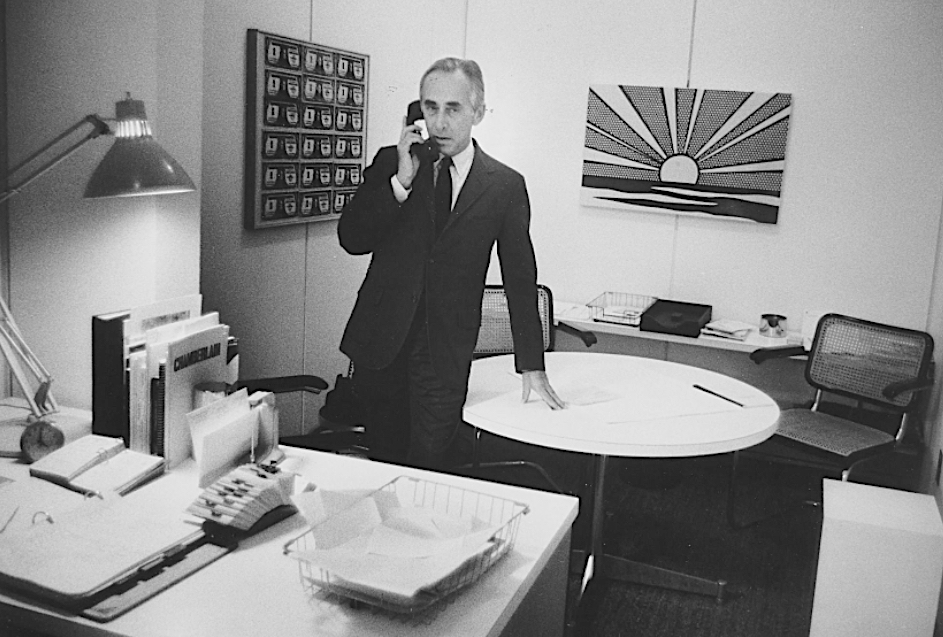
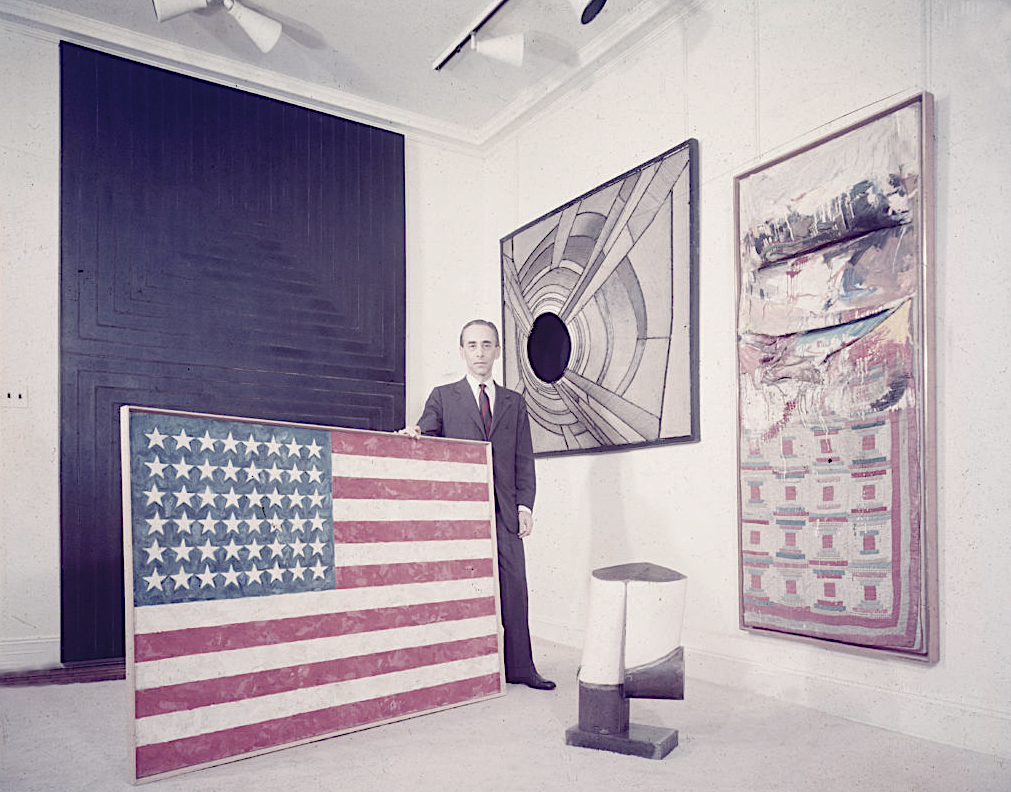

“After Ileana [Sonnabend, Castelli’s ex-wife and a dealer herself], Larry is the closest person to me in the art world,” Castelli says. That’s the kind of statement that sends a chill into the hearts of those who find Gagosian’s methods crude and fear he may be angling to take over the Castelli stable if and when Castelli decides to retire.
Gagosian and Castelli couldn’t be less alike. Castelli is elegant, discriminating, a true connoisseur in the mold of turn-of-the-century figures like Joseph Duveen and Daniel Henry Kahnweiler. Larry Gagosian, on the other hand, is flamboyant, restless – perhaps the way all dealers will have to be in the ’90s, if the market stays as heady as it is now.
“A dealer isn’t just someone who sells pictures,” says a prominent New York dealer. “The only thing Go-Go proves is that everyone has a price. He has made no contributions of his own, but has coasted on the work of other dealers.”
Castelli disputes this characterization. “Of two great paintings, Larry can determine what makes one greater,” he says.
Gagosian started visiting the Castelli Gallery several years ago, while still in business in California. (His West Broadway loft happened to be across the street from the Castelli Gallery.) Instantly, he began insinuating himself with the master.
“Sometimes we would lose Larry in the gallery and find him browsing in the racks,” recalls Susan Brundage, Castelli’s gallery director, who has worked for the dealer for 16 years. “One of the best things about Gagosian is that he does have a sense of humor. We’d have to say, ‘C’mon Larry, enough,’ before he’d stop going through our inventory.”
It was the Tremaine connection that had made Castelli first sit up and take notice of Gagosian. According to gallery sources, the Tremaines didn’t go to Castelli with their material — much of which was by “his” artists — because they simply weren’t fond of him, something that hurt Castelli deeply.
Gagosian and Castelli act as if they’ve always been in each other’s lives, like family. According to dealer Perry Rubenstein, who lives and works at Gagosian’s first New York premises, Gagosian always woos the person who can give him what he wants.
“With Larry, it’s always a matter of what can you do for me right now,” he continues. “Gagosian’s capable of sitting at someone’s table for dinner, getting information he needs, and leaving without even saying good-bye.”
Susan Brundage and her sister Patty, who also works at the gallery, describe the relationship between their boss and Gagosian as something like a romance. When the younger dealer was trying to ingratiate himself, he tendered endless attention and flattery. There were presents for Castelli, including a $7,500 Patek Philippe watch; long lunches at Castelli”s favorite restaurant, Da Silvano; longer dinners at Odeon and 150 Wooster; innumerable phone calls.
Leo, who likes to be courted (and truly is one of the few art people deserving of such treatment), was won over.
“You would have thought Leo was talking about a girlfriend,” Patty Brundage says of the early courtship days. “He talked about how Larry looked, the things he did, but didn’t say a word about his business acumen.”
Indeed, Castelli has been known to wax rhapsodic about Larry, talking about his “distinctive, close-cropped looks” and how “no one else does things in such a grand style.”
“Suddenly Leo was calling Elaine de Kooning, to try and get Larry the estate,” says Susan Brundage.
Contemporary master Willem de Kooning is still living but has Alzheimer’s disease. When he dies he will leave an estate rich in his work. (Elaine, an artist herself and now deceased, was the artist’s wife.) You may wonder why Castelli wouldn’t chase the de Kooning cache for himself, but he is still devoted to artwork fresh from his artists’ studios; he’s never been an aficionado of the secondary market. Furthermore, he seems to have a great time watching his young associate make deals. (Gagosian, incidentally, hasn’t yet won the de Kooning estate.)
“Not only is Larry the best dealer in the secondary market, but if he weren’t a dealer he would be a brilliant curator,” Castelli says. “The stories you hear about him seem unjustified gossip. People don’t dare offer the prices he offers when he wants to acquire something, and then they complain that he gets all the material.”
Gagosian came along at just the right time, Castelli says: “Art and money, to the degree that they are related, have turned the art world upside down. No one knows how to adequately deal with it. My great love was to detect not painters but movements; Larry’s is the secondary market. I wanted to be involved in the great flowering of the secondary market, and he gave me a way to do it.”
Asked if he thinks Gagosian can resist the allure of the primary market, Castelli grows philosophical. “He will go into it,” he says, “but he’s biding his time. He would not be satisfied with lesser artists, and good ones are difficult to find.”
Sometimes, however, even these two get their signals mixed. In a flurry of phone calls in the early fall, it seems they each sold the same Lichtenstein bronze — to an unidentified collector and to comedian Steve Martin, who had first dibs on it.
Those who first think that Castelli completely lost his marbles over Gagosian should take a second look. Castelli has the opportunity to make money with Larry with relatively little exertion on his part. Their gallery at 65 Thompson St. has almost no overhead, and Gagosian pulls together the shows. True, the gallery has been primarily showing Castelli artists — much, some say, to Gagosian’s chagrin, because the arrangement limits his field — but then the Castelli name, is as good as gold.
”Leo has a history of dealing with people who are universally disliked,” Susan Brundage says. “He gets a kick out of them. Before Larry, it was Doug Chrismas [a rough-and-ready L.A. dealer] and Daniel Templon [a Paris dealer].
“As for Larry, he keeps the other vultures off. Everyone thought that Toiny [Leo’s late wife] would someday be in control. When she died, you wouldn’t believe the people who descended on Leo. Leo admires Larry for being a wheelerdealer, but I don’t think Leo’s so gullible that Larry can send him down the river. You have to remember there is a lot of envy in people’s talk about all this.”
quote:
He frequently repeats one of his classics: “When women meet me, they either want to fuck me or throw up on me.”
https://www.villagevoice.com/2019/04/12/7-days-larry-gagosian-arts-bad-boy/
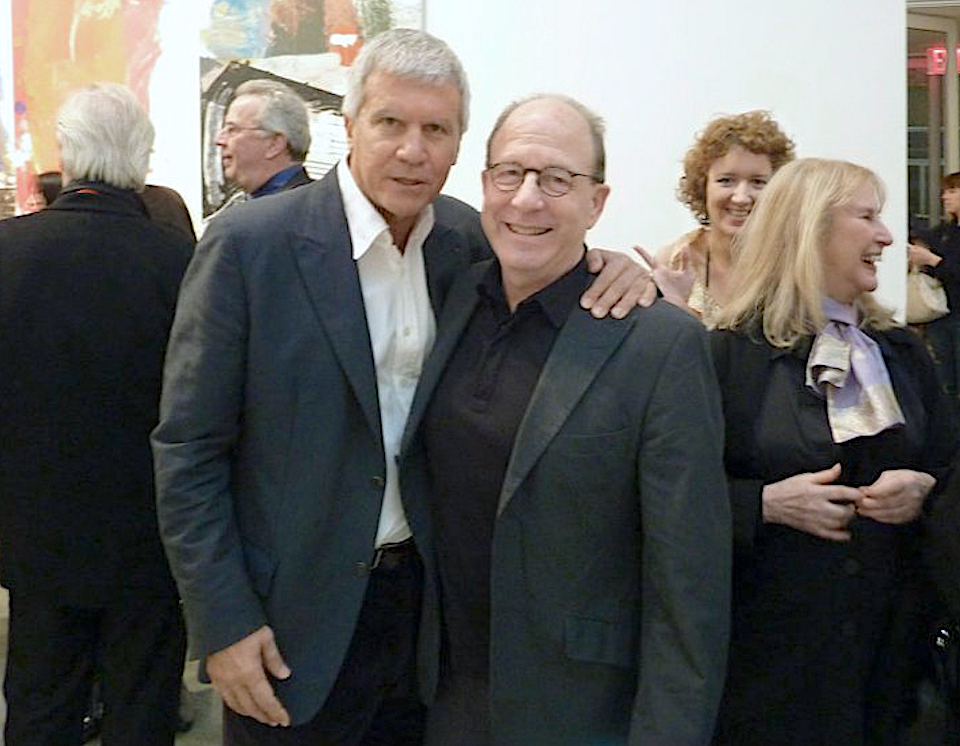
Larry Gagosian
by Peter M. Brant @ Interview, November 2012
quote:
BRANT: Who would you say was your first big client?

New York 1986: Longtime friends, Eli Broad (BROAD MUSEUM, Los Angeles) and Larry Gagosian in front of ‘Leo Castelli Gallery’.
GAGOSIAN: There were a couple of people. Eli Broad was probably my first client in California. We’re still good friends, and he’s been a great support for my gallery. In New York, I’d say that Si Newhouse was probably my first big client. I bumped into him on the street with Leo Castelli. Some other art dealer might have hustled me across the street, but Leo made a very nice introduction—that’s just the way Leo was. I think I called up Newhouse the next day.
BRANT: Wasn’t [ad exec and television producer] Doug Cramer an early client?
GAGOSIAN: Doug Cramer was a client very early on—maybe even before Eli, now that I think about it. [TV executive] Barry Lowen was also a great client—in fact, he and Doug were always in competition. Unfortunately, Lowen died many years ago. But that taught me a little bit about the art business, about how collectors are competitive, and how, as a dealer, you could sometimes use that to your advantage.
BRANT: One of the first shows you did in New York was the David Salle show in your loft that you did with Annina. How did that happen?
GAGOSIAN: That was in 1979. I’d just gotten the loft, which I’d fixed up pretty much on the cheap, and I’d seen a photograph of a David Salle painting in a magazine. It was a 1978 painting from when he was just starting, where he’d overlay images. I thought it was really beautiful, so I called Annina and she said, “Oh, I know David Salle. We could go to his studio.” Salle was living in Brooklyn at the time, so we went to his studio, and he had seven or eight of these paintings from the same series. On the spot, I said to Annina, “Let’s do a show in the loft,” and that was the first show I did in New York. It got reviewed in Art in America. Bruno Bischofberger bought a painting. Charles Saatchi bought one. The de Menil family bought one. A lot of people came to see the show, so it was a nice way to get a little traction in the art world in New York. I think the paintings were about $2,000 each. I kept one. I still have it.
full text @
https://www.interviewmagazine.com/art/larry-gagosian
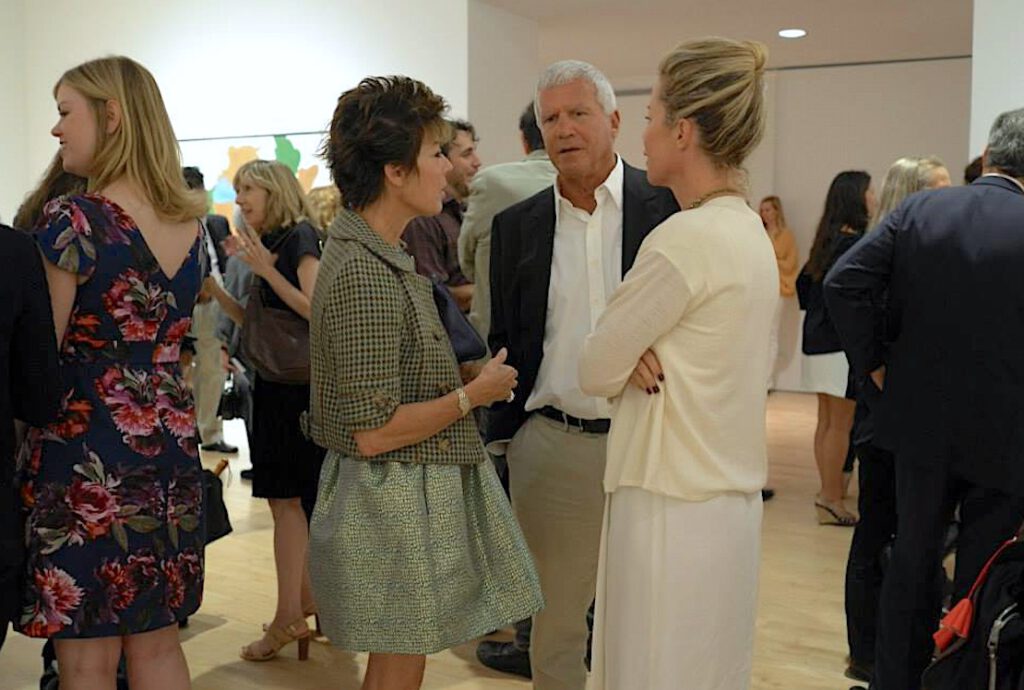
The Trials of Art Superdealer Larry Gagosian
quote:
Alberto Mugrabi was having a drink in the lobby at Claridge’s Hotel when his cell phone flashed to tell him Larry Gagosian was calling. It was June 2009, and they were in London for a week of auctions. Gagosian and Mugrabi are among the richest and most powerful figures in the art world, though the two function differently. Working primarily as a gallerist, Gagosian puts on exhibitions for several dozen artists and is responsible for building their careers—or, in the case of the deceased artists he also shows, representing their estates. Mugrabi, along with his father and brother, operates a private art dealership and trades with other collectors behind a cloak of relative obscurity. Gagosian and the Mugrabis collect several of the same artists and sometimes purchase pictures together as a way not so much of halving their own respective costs but of ensuring that they are committed to the same investments.
That was why Gagosian was phoning. In a couple of hours, Sotheby’s big evening contemporary sale would begin at the auction house’s Mayfair headquarters. There were three paintings by Andy Warhol on the block that Gagosian and the Mugrabis were following closely, offerings from, according to the catalogue, “an important European collection.” The owner was Josef Froehlich, a wealthy engineer of automotive parts from Stuttgart, who since the early eighties had painstakingly built a formidable Sammlung of German and American artists: Gerhard Richter, Georg Baselitz, Frank Stella, and Warhol, among others. But, Mugrabi told Gagosian, he’d just been informed by a Sotheby’s executive that at least two of the three Warhols might not sell—which meant that Mugrabi and Gagosian could have to buy them themselves.
Larry Gagosian essentially created the posthumous market for mid- and late-career Warhols, defining them as a subcategory and hugely raising their value. This is arguably his signal accomplishment, paving the way for everything else he’s done. But, as for all his artists, the market still requires careful husbanding.
Gagosian and the Mugrabis weren’t so much looking for a bargain as they were intent on protecting the value of the other Warhols they own. The Mugrabis, Colombian Jews by way of Trump Tower—where the family patriarch, Jose, and his wife raised the boys—possess more than 800 Warhol artworks (in addition to at least 100 works each by Damien Hirst and Jean-Michel Basquiat and numerous large pieces by Jeff Koons and Richard Prince). They didn’t want to see anything “bought in” by the auction house—which is what occurs when bidding doesn’t reach the reserve price the auction house had privately set for a piece, the artwork being returned to the seller. If that happens, says Richard Polsky, a private dealer in California and the author of the books I Bought Andy Warhol and I Sold Andy Warhol—Too Soon, the public reads that “three Warhols failed to sell last night,” and it can trigger some kind of panic: “Maybe prices for Warhol begin to slowly drop, maybe there’s a sell-off.” The effect on the Mugrabis’ or Gagosian’s collection would be like what happens to a hedge fund with a composition overweighted to a given commodity when that commodity’s price goes into a sudden free fall. There might be a ripple effect. Sarah Thornton, a writer for The Economist, has described the Warhol market as a bellwether for the entire contemporary-art market. And the prices for Warhols, as for most of the artists that Gagosian has handled, are set at auction. Which means Gagosian tries to manage what goes on there as closely as possible.
While auction houses are forbidden from explicitly sharing certain details prior to the sale of a lot, such as the reserve price, a good deal of information gets signaled to a favored collector—particularly if interests align. This was certainly the case for Gagosian and Mugrabi, who were told by Sotheby’s not to worry about the most valuable of Froehlich’s three Warhols, Mrs. McCarthy and Mrs. Brown (Tunafish Disaster), a 1963 painting—of two suburban housewives whose deaths from food poisoning had briefly been the subject of tabloid notoriety—with an estimate of £3.5 million to £4.5 million. Sotheby’s already had interest in it, Mugrabi told Gagosian: “The Tunafish Disaster is pretty covered. That’s going to sell.”
As for Froehlich’s two remaining Warhols, they were late-career works. One, a large Hammer and Sickle painting, had been produced in 1976 and was estimated at £2 million to £3 million. The other, a glittering silvery image of women’s pumps titled Diamond Dust Shoes, was made in 1980 and carried an estimate of £600,000 to £800,000. “Do you like the shoe painting or not really?” Mugrabi asked Gagosian. “I’m gonna try to buy it cheap if I can.” Gagosian was apparently interested. “Okay, we’ll always give you an option,” Mugrabi assured him, and also ran through some of the other lots. He suggested Gagosian bid on an Andreas Gursky photograph of Dubai (“the blue one”) that he thought was unlikely to sell above its estimated price range—“especially if you want to try to lure this guy in.” Gagosian was eager to represent Gursky, and has since signed him. But two Alexander Calder mobiles, a large Jean-Michel Basquiat work painted in the year of his death, and “the European art—like the [Lucio] Fontana and the Yves Klein, all that stuff”—would probably do well without their help, Mugrabi said. “I hate that Basquiat, you?” he added. “I like the ones we got so much better than that.”
Finally, according to a word-for-word record of Mugrabi’s end of the conversation, witnessed and transcribed by an associate who was at Claridge’s, he agreed to phone Sotheby’s again to negotiate. It appears that Gagosian told Mugrabi to try to float by Sotheby’s a price of £350,000, for one particular work with an estimate of £500,000, and then call Gagosian back.
What the two dealers were apparently attempting to do was thread the needle on the two lesser Warhols. To bid high—as much as the consignor was hoping to get—might serve to prop up values for the Warhol market at large, but would be expensive and make the paintings that much more difficult to sell down the road. When Mugrabi got off the phone with Gagosian, he immediately phoned Alexander Rotter, a Sotheby’s director. “The Hammer and Sickle will be difficult,” Mugrabi said. “This painting should be much less than that, you know?” He told Rotter that “at the height of the market,” he had sold “a painting like this” for $3 million. “But it’s insane that the market has gone down and I have to pay the same price because there is some stubborn guy?”—meaning Froehlich—“That’s surrealist. He’s a surrealist.” When Rotter attempted to say his piece about the consignor’s attachment to the painting, Mugrabi got agitated. “Obviously, he’s putting the painting because he wants to fucking sell it, not because he wants to, you know? If he wants to sell the picture, tell him to be realistic … Which is only better for him and better for me.”
Rotter doesn’t remember the specifics of the deal, but says that “as a rule we don’t disclose the reserve to a buyer. We have conversations with the seller throughout the process. The buyer can’t say, ‘I’ll give you this’ and make it a sure thing, but we can relay that information to the consignor and say, ‘This is a good price, you might consider lowering your reserve.’ ”
Mugrabi—along with many other art-world denizens—describes a kind of Dance of the Seven Veils. “Of course I want to have the auction house lower their reserves. They’ll tell you where the reserves will be—within a range.”…
quote:
The negotiations among Gagosian, Mugrabi, and the Sotheby’s team reflect the sort of favored-client privileges many gallerists who don’t speculate in the secondary market claim can be dangerous to collectors and artists. Mugrabi told Rotter that if Froehlich, the seller, didn’t agree to their price, he ought to take the piece off the market rather than risk a buy-in. “I’ll tell you what the bottom price is, and if the guy wants it, we can at least have a secure bid on it,” he told Rotter. “And if he doesn’t, then maybe he withdraws it from the sale.”
Then Mugrabi called his father. “Froehlich está muy stubborn,” he complained. He proceeded to have a conversation, mostly in Spanish, about which pictures were covered (“El Tuna, sí. El Hammer and Sickle, no. Los Zapatos tampoco…”). He took his father’s remarks as instructions to make an offer “por los dos.” When Mugrabi called back to Rotter at Sotheby’s, he said, “What’s up, Alex? My dad said that he can pay for the two pictures—for the Hammer and Sickle and the shoes—£2 million, all-inclusive.” Then he said, “Okay, cool. Okay, okay.” They hung up.
All that remained was to hold the auction. At Sotheby’s, Gagosian and Mugrabi sat next to each other and, reporters in the room noted, took turns raising their hands to bid on both paintings until they reached the final price (Gagosian’s lawyer says he did not bid on the Hammer and Sickle.) It appeared to others in the room that there were no other bidders. The prices for the two works were roughly £2 million and over £600,000.
Mugrabi says that a few days after the auction, Gagosian decided not to co-purchase the Hammer and Sickle piece with him, but took sole possession of the shoe painting. The larger piece sat in a warehouse until “about a year or two later,” when the Mugrabis gave it to a European dealer.
“We have several other Hammer and Sickles—three, four, I think—and this was the one we were willing to sell,” Mugrabi said. How much did it go for? Mugrabi laughed. “More than we paid for it, of course.”…
full text@
https://www.vulture.com/2013/01/art-superdealer-larry-gagosian.html
The Art of Larry Gagosian’s Empire
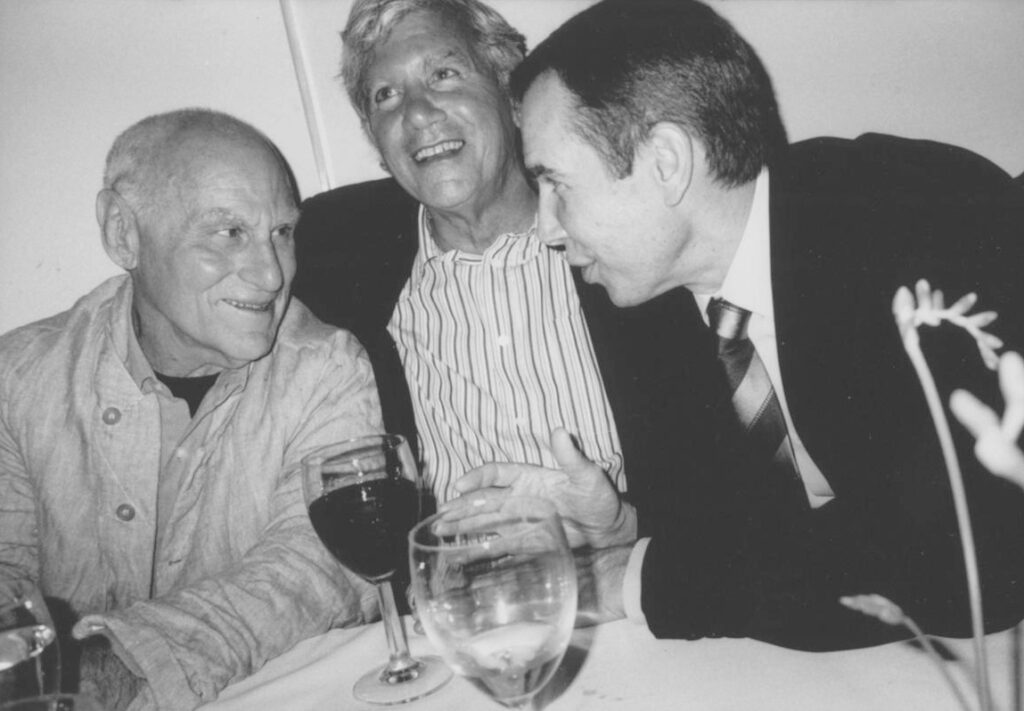
quote:
In 1991, Serra was looking for a space to show some immense forged rounds of steel that wouldn’t fit into a traditional gallery. Walking in SoHo with Gagosian and architect Richard Gluckman, he spotted a parking lot for sale. The trio went to take a look. Serra says, “Larry liked it, and I said, ‘Larry, it’s just an asphalt parking lot.’ He said, ‘How soon do you want to do this show?’ and I said, ‘Six months.’ He said, ‘OK, we’ll build you a gallery.’ Just like that. Didn’t bat an eye.” The head-high steel cylinders went up that same year in a 2,400-square-foot column-free space that was dubbed “Go-Go SoHo.” This month, the artist will take over Gagosian’s two Chelsea locations for a show of new sculptures. Serra says, “He’s never told me no, ever. Everything I’ve ever wanted him to do, he’s done.”
“You might call it risk-taking, you might call it river gambler,” adds Serra. “But Larry doesn’t frighten easily. If he sees an opening, he takes it.”
quote:
Gagosian’s energy is part of what has attracted artists to the gallery, including Koons. In the late ’90s, the famously perfectionist artist was facing ballooning expenses for his Celebration series of sculptures, which had expanded in scope and confounded the dealer trio of d’Offay, Max Hessler and Jeffrey Deitch. Gagosian invested money and rallied new collectors to commit $2 million or more each to mobilize the production of the sculptures.
“At a certain point, I realized that Larry was very connected—he was informing a lot of people about the work,” remembers Koons, who began working with Gagosian regularly in 2001. “Celebration was a little bit in deadlock. We just really needed someone to stand behind the work who had the financial means, so Larry did that, and I was able to proceed.”
“I don’t think there’s anybody in history who’s sold more unfinished artworks,” says art collector Bill Bell of Gagosian. “It’s almost unimaginable.” Bell was one of those who acquired sculptures from Celebration, including Play-Doh, which took 20 years to complete while the complex fabrication was resolved. The sculpture, more than 10 feet high and made of 27 pieces of painted aluminum, finally made its debut as the star of the Koons retrospective at New York’s Whitney Museum in 2015. “It’s a leap of faith. I looked at a computer image of what this was going to be. And then it still took 10 or 15 more years after committing, where you’re paying and you’re putting down money,” says Bell, who is still anticipating delivery of a Celebrationsculpture called Party Hat and two other more recent Koons pieces. Gagosian, Koons says, “kept people patient that if Jeff is working on it, he is working on it.”
Gagosian can be pugnacious, especially on behalf of his artists. “One day I saw him sharply rebuking a curator for presenting the work of one of his artists in a space that he thought was not optimal,” says Christie’s auction house owner François Pinault, a longtime client and friend.
quote:
When Gagosian contemplates a relationship with a new artist, he considers several factors. “It’s about the quality of the work, and it’s about, also, can you sell it?” he says. “Because believe me, that’s what artists want: They want their work to sell. It’s a big responsibility, because you’re their main source of income. So you’ve got to make sure you can do the job. You know, they’re buying their country houses and they’re putting their kids in private schools and they need money, and that makes the world go around.”
full text @
http://www.wsj.com/articles/the-art-of-larry-gagosians-empire-1461677075
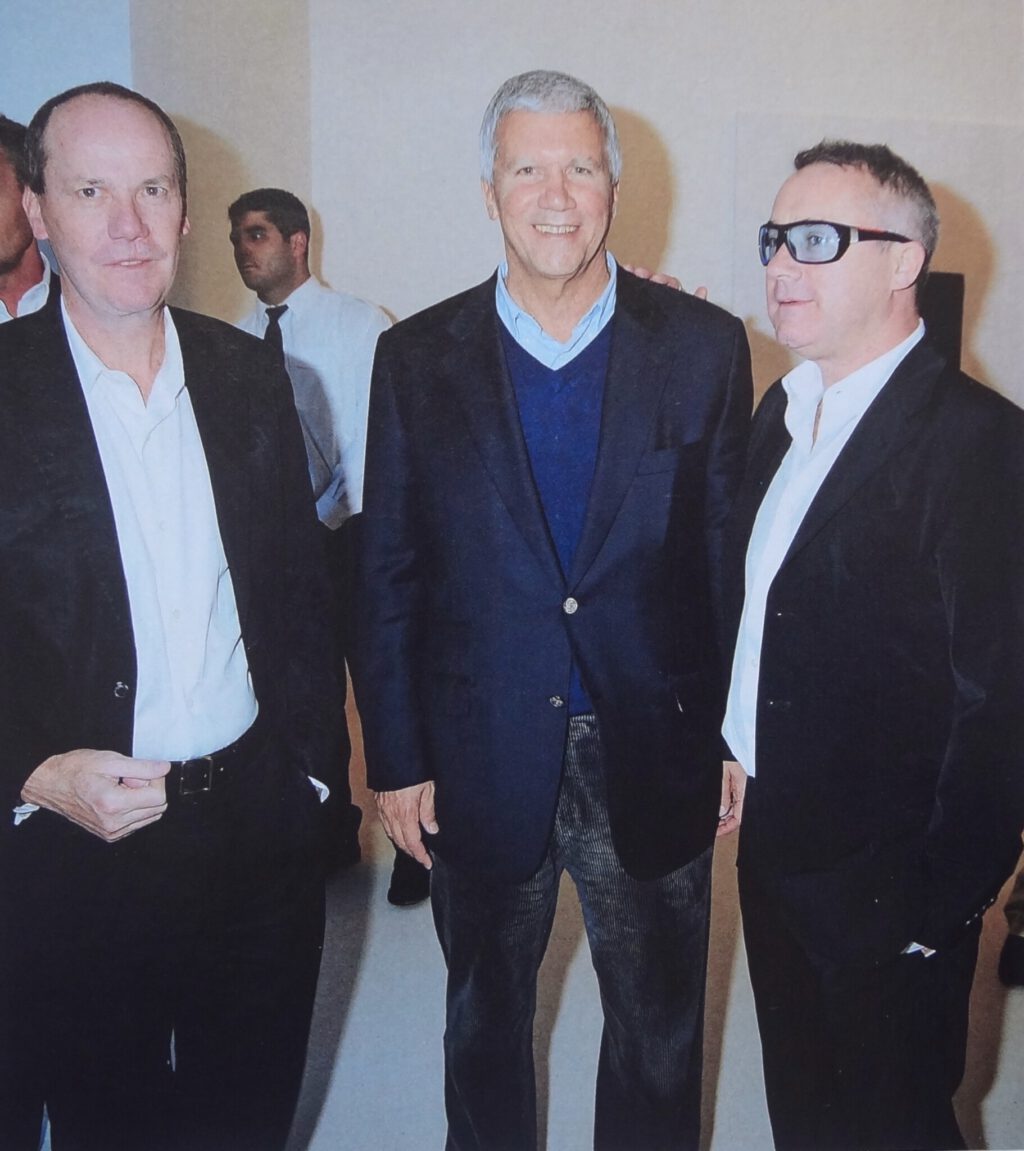
This is an extension of my past articles, which I, as a Japanese artist, published here on ART+CULTURE, see the links. It can be art-re-contextualized also as a body of work, still in progress. This text on this page has to be understood as part of my artistic practice, in this context called “appropriation art”. No commercial interests are involved. Creative Commons Attribution Noncommercial-NoDerivative Works. Photographs have to be understood under the terms of courtesy creative common sense.
‘I Hate Him, But He’s a Genius’: How Mega-Dealers Really Feel About Their Colleagues, Artists, and the Cutthroat Game of the Art Market
May 2019
quotes :
With that growth came a new degree of brazenness on many dealers’ parts for luring away artists from rival dealers. A case in point came in December 2003, with the very popular John Currin, whose figurative paintings seemed plucked from the Renaissance, though not without a satirical edge. Andrea Rosen, a midsize dealer, had nurtured his career from 1991, with slowly but steadily rising prices. She had just celebrated the launch of a three-city retrospective, from Chicago to London to New York, when news broke of the 41-year-old’s jump to Gagosian. Artists went from dealer to dealer, but to do so in the artist’s hometown at the end of the tour?
The best of Artnet News in your inbox.
Sign up for our daily newsletter.
Gagosian was amused by how much ink, as he put it, the New York Times gave to the news, but irked by a quote from David Zwirner, who called Currin’s move “a real shock” and added that “our generation doesn’t have that aggressive behavior.” That was “fucking bullshit,” as Gagosian later put it. “Everyone operates about the same way. To take the high road, or burnish his ethics on my hide—it pissed me off. If the tables were turned, he’d do the same thing. Why try to come off so PC?” No one, he added, had a gun to the head of any artist. “In my experience, it starts with you hearing the artist isn’t happy. In extreme cases, you have a gallery that’s not paying the artist. That’s less likely with a good artist. But it can happen. Or the artist and dealer have just had a falling out. If it’s an artist you like, you pay attention. That’s how I got John Currin.”
…
The departure of Japanese artist Takashi Murakami for Gagosian was even more painful, coming as it did after nearly a decade of steering his career from obscurity and widespread rejection to global acceptance.
Murakami had perfected the style he called superflat. As in a Walt Disney animation cell, there was no visual depth, no brushstrokes or evident human imperfections. Boesky had first become aware of Murakami through a small but plucky gallery called Feature Inc., from which Boesky had poached him. Galerie Perrotin in Paris would also play a role with Murakami. But credit for building his career in the United States went mostly to Boesky and a pair of laid-back Santa Monica dealers, Jeff Poe and Tim Blum, whose story said a lot about how the contemporary art market took off.
Poe was the quiet, even taciturn, one, Blum the upbeat salesman. They had started with a small gallery in Santa Monica in 1994 and found themselves struggling to get by. They had one unusual card to play, and so, in desperation, they played it. Tim Blum had become fascinated with Japan in his twenties, enough to live there for four years, learn the language, fall in love with contemporary Japanese art, and work in a Tokyo gallery. Both Blum and Poe were particularly drawn to the then-unknown Murakami. They began to exhibit his work in 1997 and became his Los Angeles dealers. Boesky became his New York dealer, first including him in a group show in 1998, then giving him a solo show the next year.
In 1999, Blum & Poe first showed Murakami at Art Basel: 10 paintings, surrounding a sculpture of mushrooms with a typical Murakami character beside them. “We were looked at as complete idiots by the rest of the fair,” Poe later admitted. “Superflat wasn’t there yet; we were ushering into Western history an Eastern history that had been excluded.”
Murakami had fabricated those first works at his own expense. In 2001, as his reputation grew, he opened a production space in Japan and began hiring dozens of workers. Clearly influenced by Warhol, he worked in both fine art and commercial art, blurring the line between the two. Ultimately, he wanted to make everything from paintings to scarves to keychains, all with his Murakami brand. In 2003, Murakami also embarked on a handbag partnership with designer Marc Jacobs of the fashion brand Louis Vuitton. The handbags were a huge hit.
By now, Murakami had begun asking his dealers to underwrite production costs—not for Vuitton bags, but for much of the rest of his work. Blum and Poe knew that Murakami was no spendthrift. He slept in a converted crate in his office, just outside Tokyo, and worked every waking hour, making all design decisions, no matter how small.
The problem was his ambition: it was just so sweeping. They underwrote as much as they could, as did the artist’s other dealers, but when Murakami announced that his next project would be a 19-foot-high platinum and aluminum Buddha, his dealers balked. Boesky was pregnant in 2006, and Murakami, she recalled, didn’t like the timing of that at all. “You’re lactating, you can’t be my business partner,” she recalled him saying.
After ten years on Boesky’s roster, Murakami severed relations with her and signed with Gagosian as his New York dealer. Blum & Poe stayed in as Murakami’s LA gallery, going so far as to charter a plane from Japan to bring the still-unfinished Buddha to the Los Angeles Museum of Contemporary Art (LA MOCA), where it would be shown as part of a Murakami retrospective. They also bought $50,000 worth of tickets for the opening night gala and provided a six-figure contribution to help finance the show itself. Even more was needed, so Gagosian and Murakami’s Paris dealer, Perrotin, kicked in. And so did Boesky.
Boesky could accept that Murakami would leave her for Gagosian. What galled her was LA MOCA’s subsequent request to borrow key Murakami works that she owned, followed by Murakami’s reaction. As soon as her Murakami paintings were hung on LA MOCA’s walls, the artist stopped communicating with her. “Murakami is a fucking genius,” Boesky said later. “I hate him, but he’s a genius. What I hate is the way he left—without honor.”
…
One of Gagosian’s great gets in this period was artist Richard Prince, who had gone from Metro Pictures to Barbara Gladstone. In the mid-2000s, Prince’s Nurse paintings, with their images of nurses taken from 1950s paperback covers, reportedly struck Gagosian as “curator art,” reported the Wall Street Journal. He wasn’t the only one: Arne Glimcher declared that Prince didn’t have a touch. “They’re mildly interesting as book covers—photographing art on art,” Glimcher acknowledged. “But how big was that idea?”
Still, as the artist’s market rose, Gagosian began taking an interest. He was seen socializing with Prince—affecting plaid shirts as Prince did. The turning point was a major Prince show at the Guggenheim. Despite Gladstone’s help in making it happen, the artist’s mind seemed set. He left, as Gladstone noted, right after the Guggenheim show.
Clearly, money figured into the decision. According to the Observer, Gagosian granted Prince a generous sixty-forty split on all sales, with the greater share going to the artist. He also put a Prince on pretty much every one of his collectors’ walls. At Gladstone, Prince’s Nurse paintings had sold in the low six figures. In July 2008, a painting from 2002, titled Overseas Nurse, sold for a record $8.4 million at Sotheby’s, indicative of what Gagosian was doing with his primary work to goose the market. It was the start of a hugely lucrative run for Prince and Gagosian, but one that would be tested by lawsuits brought against Prince and the Gagosian gallery by photographers indignant at Prince’s appropriation of their work for his own.
full text:
https://news.artnet.com/art-world/michael-shnayerson-boom-excerpt-1553674
2023/7/31 Print Issue
Money on the Wall
How Larry Gagosian Reshaped the Art World
It was the Friday afternoon of Memorial Day weekend on Further Lane, the best street in Amagansett, the best town in the Hamptons, and the art dealer Larry Gagosian was bumming around his eleven-thousand-square-foot modernist beach mansion, looking pretty relaxed for a man who, the next day, would host a party for a hundred and forty people. A pair of French bulldogs, Baby and Humphrey, waddled about, and Gagosian’s butler, Eddie, a slim man with a ponytail and an air of informal professionalism, handed him a sparkling water. Gagosian sat down on a leather sofa in the living room, his back to the ocean view, and faced a life-size Charles Ray sculpture of a male nude, in reflective steel, and a Damien Hirst grand piano (bright pink with blue butterflies) that he’d picked up at a benefit auction some years back, for four hundred and fifty thousand dollars. On a coffee table before him was a ceramic Yoshitomo Nara ashtray the size of a Frisbee, decorated with a picture of a little girl smoking and the words “too young to die.”
Gagosian is not a household name for most Americans, but among the famous and the wealthy—and particularly among the very wealthy—he is a figure of colossal repute. He is dubious of art dealers who refer to themselves as “gallerists,” which he regards as a pretentious euphemism that obscures the mercantile essence of the occupation. He has always favored a certain macho bluntness, and calls himself a dealer without apology. With nineteen galleries that bear his name, from New York to London to Athens to Hong Kong, generating more than a billion dollars in annual revenue, Gagosian may well be the biggest art dealer in the history of the world. He represents more than a hundred artists, living and dead, including many of the most celebrated and lucrative: Jenny Saville, Anselm Kiefer, Cy Twombly, Donald Judd. The business—which he owns without a partner or a shareholder or a spouse or children or anyone, really, to answer to—controls more than two hundred thousand square feet of prime real estate. All told, Gagosian has more exhibition space than most museums, and he shuttles among his outposts on his sixty-million-dollar Bombardier Global 7500 private jet. He’s been known to observe, with the satisfaction of Alexander the Great, “The sun never sets on my gallery.”
Traditionally, the model for dealers has been to bet on raw talents, and support these artists until work by some of them sells well enough to cover the bets made on all the others. Under the mega-gallery model that Gagosian pioneered, the top dealers don’t even bother with nascent artists. He has said plainly that an artist must achieve certain sales metrics before he’ll consider getting involved. Ellie Rines, who runs 56 Henry, a small gallery on the Lower East Side, told me, “What I can do that the big galleries can’t is that I spot someone who has potential. I say, ‘There’s something brewing here—the actual work may not be good, but there’s something tingling, it’s getting at something.’ ” Gagosian is content to let people like Rines do the wildcatting. Once they’ve discovered an unknown and nurtured her into a valuable commodity, he can lure the artist away with promises of more money, more support, and a bigger platform. When contemporaries describe Gagosian, they tend to summon carnivore analogies: a tiger, a shark, a snake. His own publicist once described him as “a real killer.”
The languid calm that he exuded on the eve of the Amagansett party was that of a predator between meals. At seventy-eight, he remains tall and broad-shouldered, with a full head of white hair that he keeps trimmed close to the scalp, like a beaver pelt. Gagosian has blue eyes, which often flash with mirth—he has a quick, salty sense of humor—but they can just as suddenly go blank if he feels threatened or wants to be inscrutable. In conversation, these abrupt transitions from easy bonhomie to enigmatic hostility and back again can be jarring.
“I have a weakness for entertaining,” Gagosian told me. At seven the following morning, he explained, trucks would arrive with garden furniture, and his staff would mobilize. There would be barbecue. Pizza baked in an outdoor oven. An Aperol-spritz bar and a gelato truck. Even as a child, Gagosian recalled, he liked to “have people over to my place,” and to his many friends and customers and sycophants the yearly swirl of “Larry parties” has become its own exclusive social calendar. In addition to the Memorial Day party, there is a Labor Day party, also in Amagansett; a dinner at Art Basel, in Switzerland, every June; a one-night-only exhibition at Casa Malaparte, a cliffside house in Capri; birthday parties and pre-release film screenings and opening-night banquets; a New Year’s bash at his place in St. Barts; and a pre-Oscars party at his home in Los Angeles. The sheer magnitude of his overhead is a source of envy—and confusion. His close friend Glenn Fuhrman, a financier and art collector, told me, “I’ve had so many conversations with other dealers over the years who are just dumbstruck that Larry could possibly be making money. They say, ‘I know how my business works—I don’t understand how he could be making a profit.’ ”
Gagosian vets each guest list with the vigilance of a night-club bouncer. Of the Memorial Day festivities, he said, “There’s nobody invited that I didn’t approve.” The crowd, he explained, would consist of “billionaires, artists, neighbors—mostly people I really know and am close to.” A pause, a wolfish grin. “Or want to be close to.” Derek Blasberg, a writer and fashion editor who has held a staff position at Gagosian’s gallery since 2014, told me, “Larry is a full-time gallerist and a part-time casting agent. He knows how to pull the right mix of people from worlds that are financially lucrative and creatively inspiring.” Blasberg is known for his friendships with models and actresses, which he chronicles on a popular Instagram feed. Often, Blasberg told me, Gagosian will call him and say, “I saw you with So-and-So. Can you invite them?”
A Gagosian party requires adroit curation. Too many billionaires and it’ll be as dull as Davos; too many artists and celebrities and who’s going to buy the art? Some years ago, a staffer planning a dinner for a Richard Prince opening wrote in an e-mail to colleagues, “Before Larry approves this list he would like to know if you have sold any art to these people.” That list included actors (Robert De Niro, Leonardo DiCaprio), fat-cat art collectors (Steve Cohen, Henry Kravis), and models (Gisele Bündchen, Kate Moss). Models are important, Gagosian once explained, because they “look good at a dinner table.”
The beach house’s front door opened and Anna Weyant, Gagosian’s girlfriend, entered. She is petite and blond and was wearing oversized sunglasses and holding a half-finished beer. Her hair was wet and she greeted him warmly.
“Were you swimming?” Gagosian asked.
“Yeah,” she said, smiling, before disappearing upstairs.
At twenty-eight, Weyant is half a century younger than Gagosian. She is also one of his artists, and her work has sold at auction for more than a million dollars. One painting, an eerily sensual oil portrait of an upside-down young woman who is sticking out her tongue, hangs in the vestibule, between a Prince and a Twombly.
Gagosian has been so successful selling art to the masters of the universe that somewhere along the line he stopped being their servant. “He’s one of them,” Andy Avini, a senior director at the gallery, told me. In fact, for much of Gagosian’s clientele he is less a peer than an aspirational figure.
Unlike many luxury items, art works tend to be unique objects—“one of one,” in the parlance of the trade. The designer Marc Jacobs told me, “Larry sells things that aren’t for sale.” Typically, the most coveted items become available only when the previous owner dies, or gets divorced, or goes bankrupt. An élite dealer like Gagosian, however, can sometimes wrest away a treasure by offering the owner—ideally someone he knows—a whopping premium. If you want the right kind of Jasper Johns to round out your collection, you enlist Gagosian to help you find one hanging on somebody else’s wall, then make the owner an offer he can’t refuse. If he does refuse, double the offer. Then, if necessary, double it again. It is the super-rich equivalent of ordering off-menu.
Gagosian maintains his influence by attending to the discreet status anxiety of the buyer who already has everything. Aaron Richard Golub, an attorney who represents galleries and wealthy collectors—and who has litigated against Gagosian on numerous occasions—told me, “People in the art world are incredibly insecure. The richest guy walks into the room. He wants a certain painting, but he can’t get it. Immediately, he’s insecure. That really is part of what Larry does. He exploits that.” A friend of Gagosian’s described attending a dinner at the dealer’s Manhattan town house, along with a fabulously wealthy tech founder, and witnessing a look of “real consternation” on the young man’s face as it dawned on him that, for all his money and power, he was not as connected as Gagosian, not as cultured, not as cool. Everybody was having a grand time, yet this potentate was experiencing an unspoken social demotion. Suddenly, he was a mere arriviste—a visitor at a club to which he didn’t belong. “It’s incredible,” Loïc Gouzer, a friend of Gagosian’s and a former co-chairman of contemporary art at Christie’s, marvelled. “He inverted this thing where normally the art dealers were trying to emulate their clients. Larry’s clients are trying to emulate him.”
Gagosian isn’t the first to pull off this transposition. He is a big reader, and one of his favored subjects is the life of Joseph Duveen, the great dealer who helped assemble the collections of Andrew Mellon, J. P. Morgan, and other Gilded Age titans. There are several biographies of Duveen, Gagosian informed me, and he has “read ’em all.” According to one of them, by S. N. Behrman, Duveen made a point of “showing his multimillionaire clients that he lived better than they did.”
Numerous friends of Gagosian’s cautioned me not to mistake the merry-go-round of parties and galas and superyacht cruises for a life of sybaritic leisure. The dealer and collector Tico Mugrabi, who has made many deals with Gagosian, said, “The guy is always working, even when he’s having fun. This motherfucker works 24/7.” The British painter Jenny Saville, the most expensive living female artist, who has worked with Gagosian throughout her career, concurred: “Even if he’s having dinner, or if he’s on holiday on a boat, it’s not a holiday. All the fun dinners—they have a reason for being fun.”
Gagosian’s longtime friend Jean Pigozzi, a photographer and collector, described the parties as marketing showcases in disguise. “Larry’s a genius at finding these guys, then he brings them to his house, and people say, ‘Oh, perhaps I should get a couple of Picassos.’ ” Once, Pigozzi recalled, he was at Gagosian’s Manhattan home with the French billionaire Bernard Arnault, and Arnault expressed enthusiasm for some art on display. “I told him, ‘Everything here is for sale. Don’t be nervous. You want to buy the chair? You can buy the chair. You want to buy the painting? Just ask! It’s all for sale.’ ” Gagosian insisted to me that he does not “sell art out of my house,” then allowed that he actually has. A true dealer knows that everything has a price, and the best way to raise the price of something is to say that you would never sell it.
As Gagosian likes to point out, he didn’t start life as an insider. He came of age in the San Fernando Valley, in a middle-class Armenian American family. His father, Ara, was a municipal accountant who later retrained as a stockbroker. The family never went to museums or emphasized the visual arts. But Gagosian’s parents both dabbled in show biz, performing in an Armenian theatre troupe, and his mother, Ann, had a small role in “Journey Into Fear,” a 1943 movie that was produced by Orson Welles. Once, when Gagosian asked his mother what Welles had been like, she revealed that he’d taken her out for coffee. “And I said, ‘O.K., I don’t want to know any more,’ ” Gagosian recalled with a chuckle, adding, “My mom was attractive.”
It wasn’t a happy childhood. Ara “liked to gamble, I think more than he should,” Gagosian said, and also “drank probably more than he should.” Gagosian rebelled as a teen-ager, and he told me that it was hard for his father “to discipline me, in a certain way, because his life didn’t seem particularly disciplined.” Most of Ara’s stockbroking, Gagosian said, seemed to consist of “trying to talk his relatives into buying securities from him.” (Gagosian has a sister, Judy, who declined to be interviewed for this article.) One peculiarity of Gagosian’s origin story, at least in his telling, is that his early years had a notable deficit of the quality that has come to define his life: ambition. He attended U.C.L.A., where he studied English, joined the swim team, and did a little photography. But he dropped out twice and took six years to graduate. It was the sixties, and he was in no hurry: he was a good-looking guy who liked chasing girls and playing pool and getting stoned with his pals. There was a brief, ill-considered marriage, in Vegas, to a college girlfriend, Gwyn Ellen Garside. They divorced after sixteen days. It was “stupid” to marry so young, Gagosian says now. In the divorce papers, Garside explained that she’d married him with the false understanding that they would “have children” and “both work and save to be self-supporting and to build a future together.” Gagosian’s aimlessness was so pronounced that his father once said, in exasperation, “If you just do something with your life, I’ll buy you pot.” (In 1969, the year Gagosian finally graduated, Ara died, of lung cancer. He was fifty-nine.)
After college came a string of menial jobs: in a record store; in a grocery store; the graveyard shift at a gas station. Then, through a cousin, Gagosian became an assistant at the William Morris Agency, answering phones and reading scripts. But he hated the airless corporate environment and the jockeying of his colleagues, likening the experience to “a knife fight in a phone booth.” He has occasionally suggested that he was fired by William Morris, but when I spoke to Michael Ovitz, who supervised him there, he insisted that Gagosian quit. “I tried to get him to stay!” Ovitz recalled, adding that he thinks Gagosian could have made a formidable agent. He noted of art dealing, “The vocations are similar. You’re buying and selling.”
Gagosian started working as a parking attendant in Westwood. He didn’t mind the job, he says: it paid better than the ninety dollars a week he’d made at William Morris. Then one day, in a moment now enshrined in art-world lore, he noticed a street vender selling posters at the edge of the parking lot. If Gagosian possesses one secret weapon that has equipped him for success, it might be his disinhibition. He approached the vender. The posters were “schlock,” Gagosian told me—a kitten toying with a ball of yarn and other images you might find on the wall at a pediatrician’s office. But they seemed to be selling. So Gagosian proceeded to, in his words, “copy the guy’s business.” The posters came from a company called Ira Roberts of Beverly Hills, and Gagosian started buying directly from the firm and selling on his own. Art was an arbitrary choice, in his account: “If he’d been selling belt buckles, I might’ve tried to sell belt buckles.”
By adding a cheap frame, he discovered, he could sell a two-dollar poster at a considerable markup, for fifteen bucks. He leased a little patio on Broxton Avenue, in Westwood, and sold framed posters to passersby. Gradually, Gagosian’s slacker instincts gave way to a more hard-nosed entrepreneurialism. He began letting local craftspeople sell leather goods and painted trinkets on the patio, in exchange for six dollars a day and ten per cent of their gross. In an optimistic flourish, he bestowed a name on his ad-hoc enterprise: the Open Gallery. In 1972, Gagosian told the Los Angeles Times, “It’s sort of a halfway house, halfway between having to be in business for yourself and being a stone-freak-do-nothing hippie.” Eventually, he hired a few people and moved indoors, opening a proper shop on Broxton. One early employee was the musician Kim Gordon, who, before she formed the band Sonic Youth, assembled thousands of picture frames for Gagosian. In a 2015 memoir, Gordon recalled him shouting at her when she worked too slowly, and noted, “He was erratic, and the last person on the planet I would have ever thought would later become the world’s most powerful art dealer.”
Ara Gagosian might never have made much money, Larry told me, but he always had “a nice car in the driveway.” At the start of Larry’s ascent, he also projected an image of success that was out of proportion to how well he was actually doing. From his first days in the business, stories circulated about unpaid bills, creditors chasing him, a repo man showing up for his car. Doreen Luko, an early staffer in L.A., told me that on payday Gagosian’s employees “literally ran to the bank in hopes that there would be money there for our paychecks—whoever got there first was going to get paid on time.” Mike Shatzkin, a U.C.L.A. classmate with whom he lived for a period during the seventies, told me that Gagosian sometimes walked out of a restaurant without paying the check. “I did it with him once, but it was a thing he did,” Shatzkin said. (Gagosian denies this.) One detail that has gone largely unreported in chronicles of Gagosian’s career is that, in 1969, he pleaded guilty to two felony charges of forgery, stemming from his use of someone else’s credit card. The card was “being passed around by a bunch of my friends,” he told me. “It was a stupid mistake.” He received a suspended sentence and probation.
Sensing an opportunity to make a bigger mark, Gagosian began carrying fine art, mostly prints and photographs. The actor Steve Martin told me, “When he had his poster shop in Westwood, I went in. I was a novice art collector and he was a novice art dealer.” Martin and other young Hollywood types who were starting to collect would get drawn in by something in the window and find themselves in conversation with the eager, gregarious proprietor. Gagosian had no training in art history, but the business he’d stumbled into was one for which he was preternaturally suited. He had a keen sense of aesthetics and design, and what fellow-connoisseurs describe as a near-photographic visual memory. He also was a quick learner. “Next to his bed, he had these stacks of art books,” a woman he briefly dated around this time, Xiliary Twil, recalled. “He was really studying.” One day in the mid-seventies, Gagosian was paging through a magazine and came across a series of photographs he liked—moody black-and-white shots by the New York photographer Ralph Gibson. Gagosian cold-called Gibson and announced, “I’ve got this gallery.” How about a West Coast exhibition?
“In those days, I was selling prints for two hundred dollars,” Gibson told me. “So I said, ‘O.K., but you’d have to buy three or four as a guarantee.’ ” Gagosian flew to New York with a check. Gibson was represented there by Leo Castelli, the legendary dealer who had nurtured the careers of Jasper Johns, Frank Stella, and Roy Lichtenstein. “In those days, Leo was just the Pope,” Gibson recalled. He introduced Gagosian to Castelli, and “Leo took a liking to him.”
Castelli, then in his late sixties, had grown up in Trieste and come to America during the Second World War. A debonair man with courtly manners, he was a lifelong art lover who didn’t become a full-time dealer until he was middle-aged. He spoke five languages and was so devoted to his artists that he supported many of them with generous stipends. Gagosian began spending more time in New York, and cultivated a friendship with the older dealer over long lunches at Da Silvano. The photographer Dianne Blell once joked that Gagosian chased Castelli around “like a puppy.” At one point, Gagosian presented him with a gold Patek Philippe watch. Patty Brundage, who spent decades working for Castelli, told me, “Leo was always looking at other people to kind of keep him new, to make him vital, and I think Larry was one of those people.” In “Leo and His Circle,” a biography by Annie Cohen-Solal, Gagosian posited that his impatience with art-world pretense may have endeared him to Castelli: “I did not do a lot of blah-blah-blah. I think my bluntness appealed to him.”
One day, Castelli and Gagosian were crossing West Broadway when Castelli greeted an unassuming-looking gentleman in his fifties who was walking by.
“Who was that?” Gagosian asked.
“That was Si Newhouse. He can buy anything he wants.”
Gagosian doubled back and introduced himself. “Give me your number,” he suggested, without an ounce of blah-blah-blah. It was one of the most fateful introductions of his life.
Castelli specialized in what is known as the primary market: he guided the careers of living artists and sold their new work in exchange for a commission. He took pride in spotting talent in chrysalis. “When I first saw the work of Johns and Stella, I was bowled over,” he told an interviewer in 1987. Castelli, who said that he dealt art chiefly “because of its groundbreaking importance,” regarded the commercial side of his profession as secondary. When Gagosian initially ventured beyond poster-hawking, he had no relationships with artists, so he couldn’t be a primary dealer in the Castelli mold. But what he did have was a gallery in Los Angeles, access to an untapped ecosystem of West Coast collectors, and something that Castelli decidedly lacked: chutzpah. The art dealer Irving Blum knew both men during this era, and he told me, “Leo was really aristocratic and civilized. And Larry”—he laughed—“Larry was a tiger.” Castelli, who had no gallery of his own in California, began consigning works to Gagosian, including pieces by Frank Stella. Gagosian established a reputation for showing top artists who already had representation in New York. “I’m a very bad salesman and Larry is a very good salesman,” Castelli conceded, with a gentle caveat about his more brazen protégé: “Of course, he wouldn’t be as scrupulous as I am in advising one of my clients not to buy a painting because it’s not good enough for them.” He added, “He also knows how to deal with very rich people.”
In pursuing a very rich clientele, Gagosian carved out a different niche from Castelli’s—one that harked back to Duveen’s relationships with the robber barons. The secondary market involves the buying and selling of previously owned work. Castelli had little interest in it, and in the mid-twentieth century—when Americans were creating the most dazzling art—the secondary business was perceived as a backwater by some dealers. It was also considered a bit distasteful: Duveen had often supplied his nouveau-riche clients by obtaining Old Master paintings from noble European families that had fallen on hard times.
By the nineteen-eighties, however, a new generation of wealthy Americans was eager to assemble great collections—and what they desired most was contemporary art. Si Newhouse had a media empire, and for more than three decades he was the owner of this magazine. (His family still owns Condé Nast, the parent company of The New Yorker.) He was also obsessed with twentieth-century art. On Saturday mornings, a car ferried him from his town house, on East Seventieth Street, to the galleries of SoHo. He had a sharp eye and a ready checkbook, and before long Gagosian could be seen squiring him on these excursions.
While Gagosian was on the rise, he occasionally championed promising young artists. When he saw the work of Jean-Michel Basquiat for the first time—at a 1981 group show in SoHo, organized by the dealer Annina Nosei—he bought three pieces on the spot. The following year, he mounted Basquiat’s first show in L.A., where he had opened a bigger, nicer gallery. (Basquiat stayed at Gagosian’s house in Venice, along with Basquiat’s girlfriend at the time, a not yet famous Madonna.)
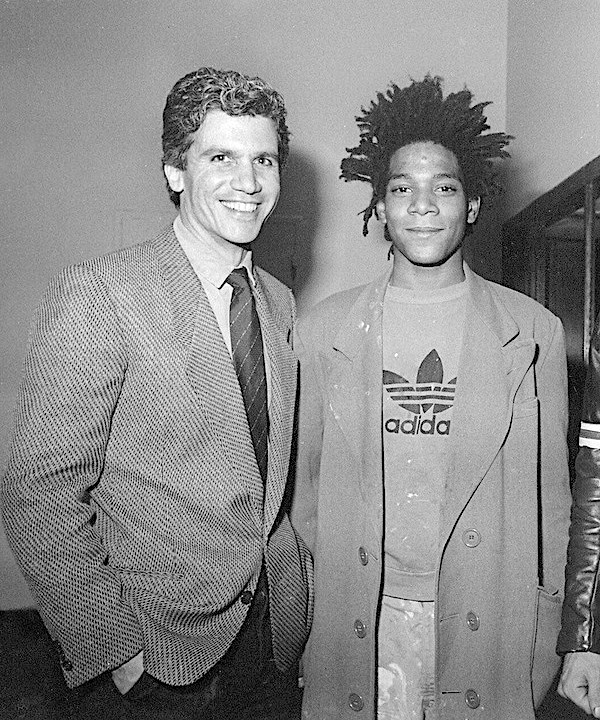
But the main service that Gagosian provided for Newhouse wasn’t scouting out the primary market; it was being his detective on the secondary market. The œuvres of even the most renowned artists are inconsistent. Masterpieces are rare and often hard to find. No central registry records the owners, locations, and prices of art works. Being a good secondary dealer requires knowing which people are collectors, where they live, what hangs inside their houses—and whether they might be induced to part with any of it. Gagosian excelled at what Douglas Cramer, a soap-opera producer and an early client, once called “the hunt.”
Like a secret society, the art market was governed by obscure social codes, and Gagosian was so unbound in his energies and so shameless in his tactics that he immediately attracted notice and controversy. The telephone was his instrument of choice, and he often made upward of a hundred cold calls a day, sniffing out the location of an art work, lining up buyers, then haggling with the owners until the work shook free. The artist Jeff Koons, who first encountered him in this period, and went on to work with him for many years, told me that the young Gagosian infused the market with a thrilling sense of possibility: significant art that had been “locked up” suddenly became accessible. One reason that Gagosian knew where so much noteworthy twentieth-century art was hidden is that he had access to a treasure map, in the form of Castelli. “I could give him a lot of information on where the paintings were,” Castelli once acknowledged. “Because I sold most of them.”
Nosei told me that, during Gagosian’s parvenu years, he sometimes talked his way into parties and showed up at dinners to which he wasn’t invited. When we met in Amagansett, he mentioned that, in the eighties, he’d ventured into the house we were sitting in while the owner was throwing a party. Friends he was staying with at the time were invited, he told me, so he tagged along. “There wasn’t a place for me at the table, so I ate over there,” he said, indicating a side garden. He developed a reputation for wandering away from the festivities at private homes, taking clandestine Polaroids of any impressive art that he spied on the walls, and then offering those works to his collectors. A few days after a party, he would telephone the hosts and startle them with the news that he had a buyer who was very interested in the Matisse above their living-room sofa. His hunger, aggressiveness, and stamina were so conspicuous that people in SoHo began referring to him as GoGo.
Gagosian has denied surreptitiously photographing art works and offering them for sale without authorization, but there is ample evidence that he did just that. Douglas Cramer told the Times, “I was in Larry’s office once and I saw Polaroids of pieces that were in my home.” Indeed, a version of this gambit (minus the Polaroids) remains part of Gagosian’s repertoire. Marc Jacobs told me about a dinner he once hosted at his apartment in Paris; among the guests was Gagosian. Several days later, Gagosian called Jacobs and proposed buying two paintings in the apartment—a John Currin and an Ed Ruscha. As it happened, Jacobs was about to build a new house, in New York, and needed money, so they quickly came to terms. “The deal was he would pay immediately,” Jacobs recalled. “Somebody came and picked up the paintings three days later, and the money was in my account. Done.”
In 1985, Gagosian relocated to New York and opened a gallery on Twenty-third Street, in Chelsea, which at the time was considered a deeply inauspicious location. (He has always possessed a genius for real estate—the investment paid off handsomely.) It can be difficult these days to recall how polarizing a figure he was when he first swept into the city. Then, even more so than now, people wondered about his finances: How could he afford to live so lavishly and pay so much for pictures? Did he have a secret backer? Gagosian has always denied it. (Newhouse, for his part, said that he was not Gagosian’s backer, but he once noted, “There are moments when I wish I were.”) Rumors circulated—without any apparent foundation—that Gagosian might be fronting for arms merchants, or in league with drug traffickers. His sudden success had prompted hostility and suspicion in the business, and he portrayed the scuttlebutt as a calculated effort to undermine him. In a 1989 interview, he lamented that “people don’t have anything better to do than make up gossip,” adding, “I’m not going to stop making money to squelch rumors.”
One widespread story at the time was that Gagosian liked to make lewd telephone calls to women. In a 1986 diary entry, Andy Warhol alluded to these accounts, writing, “Larry, I don’t know, he’s really weird, he got in trouble for obscene phone calls and everything.” (In the 1996 book “True Colors: The Real Life of the Art World,” by Anthony Haden-Guest, Gagosian responded, “He called me weird. Warhol!”) The gossipy art magazine Coagula once expressed surprise that such allegations hadn’t slowed Gagosian’s ascent, noting, “Despite persistent rumors about dirty money and dirty phone calls, Larry Gagosian continues to fill his stable with big names.”
During this period, Gagosian developed an enduring reputation as a Lothario. He dated many glamorous women, including the model Veronica Webb and the dancer Catherine Kerr; he and Kerr were briefly engaged, but days before the wedding he called it off. (“Cold feet.”) On more than one occasion, he told people, “When women meet me, they either want to fuck me or throw up on me.” An item from Coagula in 1995 described a woman who allegedly called the police because Gagosian had been sending “a chauffeur-driven limousine to her pad every night, which patiently waits for her to emerge, kidnapping-style.” (Gagosian denied to me that he ever did this, pointing out, “It’s expensive to send a limousine.”)
“Talk to anyone you want—talk to people who don’t like me, I don’t care,” Gagosian told me when I first proposed writing about him, before catching himself and saying that maybe I shouldn’t talk to his “ex-girlfriends.” When I mentioned that I might be duty-bound to do so, Gagosian gave a little laugh, looked at me without blinking, and said, “I hope you have a good legal department.” He dismissed the stories about obscene phone calls as “complete horseshit.” He suggested that the rumors had originated with a woman who worked as an art adviser and was unaccountably upset with him, even though “I never had anything to do with her.” He wouldn’t tell me who the woman was.
I spoke to someone—not an art adviser—who said that she’d received such a phone call. She didn’t want to be named, she told me, because “Larry is very powerful and the art world is very small.” But she described an incident, in New York in the early eighties, in which she and her husband attended a party, and were introduced to Gagosian. They chatted only briefly, but then Larry came back and, looking at her intensely, asked her to tell him her name again. She told him, and he repeated it a few times, then walked off. Later that night, she and her husband were asleep in bed when the telephone rang. Her husband answered and a man asked for her by name. When the woman took the phone, the caller said a series of sexual things. “I hung up, and immediately we said, ‘It must have been Larry,’ ” she recalled. “It was so blatant. He could have waited a week, and I wouldn’t have figured it out.” It was only after this incident, the woman said, “that I started hearing from others, ‘Oh, he’s sort of known for doing that.’ ” (I also spoke to the husband, who corroborated this account, and to a friend of the woman’s, who remembers her recounting this experience four decades ago.)
When I told Gagosian about my conversation with the woman, without sharing her identity, he said, flatly, “Not true. Never happened. Never. I’m not that kind of guy.” In any case, the consensus among people who say that Gagosian made harassing phone calls is that he stopped. I did not hear so much as a rumor about this sort of conduct occurring at any point in the past twenty-five years.
As the business grew, Gagosian lost his patina of disreputability. He built a base of top-tier clients, and often played them off one another. The Chelsea gallery’s first show was an exhibition of Pop art from the collection of Burton and Emily Tremaine, a Connecticut couple with a sheet-metal fortune. Gagosian had established this relationship with his usual brio, looking up the Tremaines in the phone directory, then cold-calling them and offering to buy a Brice Marden painting that they owned. Gagosian befriended the couple, and soon they were entrusting more of their art to him. In his recollection, Burton would call and say, “Larry, we got too much art, we need some cash,” and he’d reply, “I’m your guy.” The Tremaines owned Piet Mondrian’s final painting, “Victory Boogie Woogie,” and Gagosian told them that he thought he could get eleven million dollars for it. He then telephoned Si Newhouse and sold him the painting for exactly that amount. (After the sale, Newhouse said of Gagosian, “I think he has a refined eye. But at the level I’m dealing with, his eye is less important. It doesn’t take an eye to sell Mondrian’s ‘Victory Boogie Woogie.’ It takes a willing buyer and a willing seller and someone like Larry to bring them together.”)
In 1990, the owner of the Amagansett house was getting divorced, and Gagosian bought it, for eight million dollars. He bought a carriage house, with its own lap pool, on the Upper East Side. He bought a Ferrari. He also leased a big new gallery space in the Parke-Bernet building, on Madison Avenue. Allan Schwartzman, who was then a journalist and is now an art adviser, recalls meeting with Gagosian shortly after he signed the lease. The new space was still under construction, and they stood in the vestibule, looking out at the wealthy men and women of the Upper East Side walking by, like salmon running thick in a river. “He was clocking which men of extreme high net worth and which existing or potential art collectors were passing by, saying, ‘There goes So-and-So,’ ” Schwartzman said. “He knew who everyone was. He saw them before they knew him. That kind of aggressiveness and that eagle sharpness for who mattered—there was no precedent for that. That’s the eye of an industrialist. That’s someone who was seeking to build a massive financial empire.”
The Gagosian gallery is still headquartered in the Parke-Bernet building, and now takes up two whole floors. There’s a retail shop on the ground floor, which sells art books, prints, and T-shirts, offering the more budgetarily constrained consumer a little piece of the action. In what seems unlikely to have been an accident of design, you must pass through the gift shop in order to access Kappo Masa, the high-end restaurant that occupies the building’s basement, and is billed as a “collaboration” between Gagosian and the renowned Japanese chef Masayoshi Takayama. This was where I first met with Gagosian, for lunch in January. He was sitting at a prominent table in the wood-panelled, art-filled space, framed by an open kitchen where great flames occasionally ignited, like petroleum flares. The place was boisterous, and he greeted passing supplicants with the smiling disengagement of a village mayor. (“Hi, how ya doing? Maybe I’ll see you in Paris.”) He still lives nearby, but in 2015 he sold the carriage house, for eighteen million dollars, and moved into the Harkness Mansion, a twenty-thousand-square-foot domicile that he bought for thirty-six million dollars and then subjected to an exacting multiyear renovation. (He wanted a swimming pool on the roof.) It’s a lot of house, he concedes, but at the time he bought it he was dating Chrissie Erpf, a longtime employee, and she had four children, so he wanted enough space to accommodate her family. Then they broke up. Now Gagosian shares it with Anna Weyant, whom he started seeing in 2021, and their respective dogs, along with some staff. The house, which was renovated with an eye for entertaining, can comfortably seat fifty people at a dinner.
When Gagosian established his gallery, he disdained formal meetings—he finds bureaucracy and protocol dull. To increase sales, he hired several people to join him as “directors,” but he treated them a bit like those crafts peddlers in Westwood who had paid a commission to sell trinkets on his patio. Directors were given a phone and a computer and instructions to sell. There was no mentoring from Gagosian, and little lateral collaboration. A senior director in London, Millicent Wilner, once observed, “There’s no hierarchy. There’s Larry—and everyone else.”
Gagosian telephones his directors all day. If he can’t reach them, he will call them ten times. He will call their spouses. He will send company-wide e-mails demanding to know why people haven’t picked up the phone. When he won’t be reachable for any length of time, an e-mail is sent out: “Larry will be unavailable between 3 and 4:30 today.” By implication, he is accessible the rest of the time—and he expects the same of his underlings. Because the business is commission-driven, and still dominated by its charismatic owner, competition among directors can be ferocious. “There’s a lot of money on the table,” a source who has worked at the gallery told me, explaining that directors can make ten per cent of the gallery’s profit on a sale. The directors “are Larry’s children,” the person said, “and they all want to look the best in their father’s eyes.”
Other mega-galleries—Zwirner, Hauser & Wirth, Pace—are family operations. Gagosian has no kids. Having built this global colossus, he is now besieged by speculation about what will become of it when he’s no longer in charge. Kappo Masa was noisy, and Gagosian, who has become hard of hearing but does not wear a hearing aid, kept tilting his head so that I could repeat things. He is very well preserved for seventy-eight, but he recently had cataract surgery to fix one of his famously discerning eyes (“I couldn’t read a fucking book”), and the other eye has an underlying condition that can’t be corrected. Late last year, the gallery announced the appointment of a new board, a characteristically starry assortment of cultural and business types: Sofia Coppola, the film director; J. Tomilson (Tom) Hill, the former vice-chairman of Blackstone Group. Because Gagosian is such an object of fixation in rarefied circles, the press framed this reshuffle in corporate governance as a moment of Shakespearean portent. The Times: “Without Heirs, Larry Gagosian Finally Plans for Succession.”
At lunch, Gagosian bristled at this characterization. “That’s not really what drives this,” he said. “I don’t see it, per se, as succession planning.” He assured me that he has no plans to retire or to even step back a little. “I enjoy what I do,” he said, adding, “I don’t know what else to do.”
Gagosian, who eats at Kappo Masa several times a week, ordered grilled yellowtail and a seaweed salad. He was affable and charming but noticeably guarded. He will happily repeat anecdotes that he’s told a thousand times (Basquiat and Madonna, etc.), but he greets any questions about his motivations or his psychology, or about his clients or the particulars of his business, with the stone-faced implacability of a secret agent. This may be the natural result of running an operation that is reflexively discreet: Gagosian reaps huge profits from asymmetries of information. But, fundamentally, he does not seem to be an introspective person. In Michael Shnayerson’s 2019 book, “Boom: Mad Money, Mega Dealers, and the Rise of Contemporary Art,” a director recalls asking Gagosian if he might write a memoir. Gagosian’s response was that he avoids self-reflection, because that is how you “lose your edge.” The late art critic Peter Schjeldahl once observed, “We think of genius as being complicated. But geniuses have the fewest moving parts. . . . Gagosian is simple. He’s basically a shark, a feeding machine.”
That may be true, but Gagosian is also a scholar of appearances, and he told me that the image many people have of him is unfair. In contrast to his mentor, Castelli, he has been seen as more of a collector’s dealer than an artist’s dealer—a view that Gagosian considers a caricature. Of course, in the early days he only represented collectors. One innovation that even Gagosian’s detractors credit him for is holding museum-quality historical shows in a commercial gallery. He did this out of necessity, he explained: “We had no artists!” In 1995, he mounted a Rubens show, and later the Picasso biographer John Richardson became a consultant for the gallery. Hiring a scholar was unconventional but clever. Richardson curated a series of landmark Picasso shows, including a 2009 exhibition in Chelsea of the painter’s late pictures, which drew an estimated hundred thousand people. The novelty of such events, in theory, was that in most cases the work on display was borrowed, and not for sale. But to assume that Gagosian was motivated purely by his love for Picasso or by his civic good will would be to miss his grasp of the subtle physics of the business. The historical shows were advertisements for the gallery, affiliating the Gagosian name with some of the greatest artists of all time. And often there was a thing or two for sale. On the gallery floor, it might have been all reverential appreciation for the brushstrokes, but a Gagosian director once divulged that Larry was also “aggressively negotiating in the back room.” (Deals were made on some of those late Picassos.) As for the relationship with Richardson, Irving Blum told me, “Larry was playing the long game,” adding, “He understood the involvement that John had with members of the Picasso family. He thought he could get a certain amount of material through that conduit.” Richardson died in 2019. The gallery now has relationships with several Picasso heirs. In the end, Blum said, he “got much more than he ever thought he could.”
Gagosian eventually amassed a stable of living artists, pursuing them as relentlessly as he had hunted for privately held masterpieces. One of the first major figures he went after, back in the eighties, was the Abstract Expressionist Cy Twombly. The artist, who died in 2011, was then in his late fifties and dividing his time between Lexington, Virginia, and the port city of Gaeta, south of Rome. Gagosian telephoned him in Italy incessantly. Nicola Del Roscio, the president of the Cy Twombly Foundation, told me that for a while Twombly greeted these intrusions by immediately hanging up. Finally, on one occasion, Twombly picked up and Gagosian said, “It’s the crazy Armenian—don’t put down the phone!” Twombly was so amused that he decided to hear Gagosian out.
It was the beginning of an extraordinary relationship. “I loved Cy,” Gagosian told me. Twombly began exhibiting at the gallery in 1986, and in the subsequent two decades he experienced the kind of late flowering that most artists can only dream of—big, vigorous canvasses that Gagosian sometimes sold days after they were finished. In another pioneering move, Gagosian opened international galleries—starting with London, Rome, and Paris—and he often inaugurated them with a show of new Twomblys. “It was an incredible collaboration,” Del Roscio said. “They almost were trying to outdo each other, like a game.” These new Twombly paintings often sold for five million dollars. “Naturally, there is also a financial interest—why not?” Del Roscio said. “Money is at the base of everything.” Gagosian sometimes jokes that “overhead is the mother of invention,” and it’s not an exaggeration to say that his gallery’s international expansion was subsidized largely by Twombly. Gagosian had secured a commission rate of about thirty per cent, so if he sold ten paintings at an opening he could pocket fifteen million dollars.
When Leo Castelli died, in 1999, Gagosian inherited a number of artists and collectors. (In a public conversation at the 92nd Street Y, Gagosian was asked what he had absorbed from Castelli. He replied, “I absorbed a lot of his, uh, clients.”) In 2001, a little over a year after Gagosian expanded to London, the city’s dominant dealer, Anthony d’Offay, retired, and Gagosian inherited yet more, including the sculptor Rachel Whiteread. He also poached artists with abandon. One advantage of having satellite galleries is that he could offer shows in other cities to artists who already had New York representation, just as he had introduced Ralph Gibson’s work to Los Angeles. Gagosian scorns any suggestion that luring artists away from other dealers is unsporting, and resents any dealer—David Zwirner is a favorite example—who tries “to burnish his ethics on my hide.” Gagosian may be tetchy about this subject because these days he suffers the occasional defection himself: Yayoi Kusama left for Zwirner; Julian Schnabel left for Pace. It’s fair to say, though, that one way Gagosian has transformed the art business is by normalizing poaching. Many artists have clearly absorbed the idea that loyalty is sentimental and that, in a free market, they should always keep an eye out for a better deal.
When Schnabel quit the gallery, in 2016, he said, “I wanted to have a more human relationship with the person who was representing my work,” adding, “You want somebody to be on the other end of the line.” The sheer size of Gagosian’s current roster means that he cannot visit every studio or attend every opening, and this can generate anxiety and resentment. Even with his own artists, he must contend with the Gagosian reputation. In 2011, the artist Mike Kelley, who was represented by Gagosian before his death, told the magazine Artillery, “Larry Gagosian, I know, doesn’t care about my work. It’s like, you’re there as long as he can make money off you.”
Nonetheless, many of Gagosian’s artists adore him. The front yard of the Amagansett house features a work by Richard Serra, who began showing at the gallery in 1983. His mammoth sculptures of weatherproof steel pose devilish logistical challenges: Andy Avini, the senior director, recalls a day when a huge curved sheet of steel was waiting to be installed for a show in Chelsea, and downtown skateboarders turned it into an improvised half-pipe. Gagosian offers artists commercial rewards, but he also helps them expand their ambitions, through big budgets and big spaces. The gallery has to approve expensive projects, and Serra once said of him, “He’s never told me no.”
Jenny Saville, who joined Gagosian in 1997, admitted to me that she was attracted by the illustrious lineup: “It was a gallery that showed Twombly and Serra, and Larry saw me as a peer in that way. I was twenty-six years old. What’s not to like?” There was a heady sense, she continued, not simply of graduating to that pantheon of esteem but also of entering into conversation with her heroes. Once, she got to help hang a Twombly show in New York. On another occasion, Gagosian arranged for her to spend an afternoon in the East Hampton studio of Willem de Kooning, which had remained essentially untouched since his death, a few years earlier. She passed the hours studying the master’s long palette knives. “I probably had ten years of development that day,” she said.
The painter Cecily Brown, who grew up in England, told me that when her stepmother first met Gagosian she said, “He’s so American.” He was like someone “you would see on TV when you were little,” Brown continued. “The looks. The attitude. Very male.” In the early years, Gagosian often visited Brown’s studio. “He had a knack for finding the oddball thing,” she remembered. “There’s always the obvious favorite, but sometimes the artist has a secret favorite, and I’d often find that Larry would home in on the oddball work in the corner and say, ‘That’s a good painting.’ ” Gagosian is not given to flowery disquisitions when commenting on a work of art, preferring instead to render a clipped verdict: “She’s a good painter.” “Not his best.” For all his avaricious energy and negotiating prowess, Brown believes, Gagosian couldn’t have accomplished what he has without “that brilliant eye.”
When Gagosian first took on Brown, he told her, “Your paintings are too cheap for my customers.” He’d propose higher prices, Brown would balk, and they’d argue until they met somewhere in the middle. Brown left the gallery in 2014, after fifteen years there, and told me that she did so only because it was time for a change. But others suggested to me that the gallery may have placed too much emphasis on selling Brown’s work to plutocrat collectors, and not enough on placing it in museums. “I heard she thinks my gallery has become too commercial,” Gagosian told me. (Brown, now at Paula Cooper, currently has a solo show at the Met.)
There’s no question that Gagosian cares deeply about art. Like a lot of high-end collectors, he rhapsodizes about what it’s like to “live with” art, suggesting that it’s one thing to appreciate a painting in a museum or at somebody else’s dinner party but a whole other plane of experience to wake up each day and see a Lichtenstein or a Warhol. For many years, Gagosian had Picasso’s last finished painting above his bed. When I excused myself to use the bathroom at the Amagansett house, he instructed me, with practiced nonchalance, to “take a hard right at the Damien Hirst pill painting.”
Then again, what does it mean to live with something if not to take it for granted? Gagosian’s quasi-spiritual register often recedes in the face of more mechanistic concerns. Jean Pigozzi mused, “Sometimes it’s a bit depressing to be with all these guys, because they don’t really say, ‘Oh, this is an incredible painting and the colors are fabulous and it was influenced by Renoir.’ It’s more, ‘Well, this is seven million dollars, but Steve Cohen has bought one that sold for seven and a half, and there’s one that’s coming to auction that could reach nine.’ Sometimes they forget that it’s art.”
Saville made a similar observation. “Larry loves art, but he also loves money in a way that I just don’t understand,” she said. “I remember there being a de Kooning painting, and we were both going to see it. I was devouring the brush marks, and I could see he was devouring the price tag.” In an interview for a 2012 PBS documentary about David Geffen, the billionaire media impresario and art collector, Gagosian acknowledged that Geffen has a real eye, and loves art, and loves living with the art and blah-blah-blah—but then he observed that Geffen was also a master at treating art as an asset. After all, Gagosian pointed out, “it’s money on the walls.”
“I’m just looking in my apartment in New York at how many pictures I’ve bought that he’s been involved in,” David Geffen said, when I reached him on the phone. He counted out loud: “One, two, three . . . no, he wasn’t involved in that . . . four, five, six. I mean, six pictures in my apartment. I’m sitting here in my living room and I’m looking at this Twombly triptych. I had seen it at this house Larry used to have.”
Gagosian remarked to me once, about Duveen and Castelli, “It sounds egotistical, but I’m a little bit of a combination between those two. We represent some of the most important living artists, but we also have a very, very robust secondary-market business.” The strategy is to skim the cream off the top of both markets. He is able to maintain this enviable position through his relationships with top collectors. Gagosian may have strong bonds with some of his artists, but he has more in common with the collectors. Their interactions are sometimes combustible, but that’s inevitable, given the money at stake and the egos involved. “I’ve spent an incredible amount of money buying pictures from Larry,” Geffen told me. “At any given moment, I may feel like I’ve overpaid for something. But in the end I’ve never overpaid for anything. For me, they’ve been incredibly good investments. Most of the money I’ve given away, which is well over a billion dollars, I financed by selling paintings that I owned.”
Part of the reason Geffen’s bets have paid off so extravagantly is that Gagosian’s tenure in the business has coincided with a period of staggering growth in the price of contemporary art. In 1980, when Burton and Emily Tremaine sold a 1958 Jasper Johns painting, “Three Flags,” to the Whitney for a million dollars, the deal made headlines, because it was the first known instance in which a work by a living artist had broken seven figures. In 2010, Steve Cohen purchased a different Johns flag painted in 1958—for a hundred and ten million dollars. Gagosian has acknowledged that the market he first flourished in, during the late eighties, was so overhyped that it was “like tulip mania, like a Ponzi thing.” There were subsequent dips, to be sure, but, as he pointed out to me, “each peak has been higher than the one that preceded it.” In 2012, he opened a gallery on the grounds of Le Bourget airport, outside Paris, where his clients can buy art upon landing in their private jets.
Even during downturns, he has found ways to thrive. After the Dow dropped in 1990, Geffen—still as liquid as the day is long—swooped in looking for bargains. According to Gagosian, staff at the Madison Avenue gallery used to joke that when Geffen stopped by it meant that they would “make payroll this month.” During this period, Si Newhouse and his wife, Victoria, moved into an airy apartment overlooking the East River. “I remember going there with Larry,” Pigozzi recalled. “Larry said, ‘Don’t you find the view a bit boring? Why do you need so many windows?’ ” (Windows, Pigozzi explained, “are the enemy of the art dealer.”) The Newhouses sold off part of their collection to Geffen, including many paintings that Gagosian had helped the couple acquire. For these art works, Gagosian landed a repeat commission. “I don’t like to sell paintings to museums,” he has quipped. “Then I can’t get them back.”
Serial commissions became common for Gagosian as more and more wealthy people started to regard art as a category of investment. He maintained a small club of extremely affluent collectors who repeatedly mixed up their asset allocations—trading among themselves, through him. In 2003, Steve Cohen bought a Jackson Pollock drip painting from Geffen for fifty million dollars. Three years later, Gagosian asked Geffen if he’d ever sell a de Kooning he owned, “Woman III.” Geffen said, “I suppose, if you got me a hundred and forty million.” Cohen bought it that day. The reverse dynamic occurred in 2020, after Cohen spent $2.4 billion to acquire the Mets baseball team. “Perhaps Steve’s in the mood to sell,” Geffen said to Gagosian, who then orchestrated Geffen’s purchase of a Giacometti sculpture from Cohen, for a hundred and forty-seven million dollars. This is a lucrative situation in which to serve as middleman. As Geffen put it, “If Larry represents the owner, and you want it, you’ve got to buy it from him.” And, as Gagosian recognized, the competitive drive of self-made billionaires does not exactly go into remission once they’ve made a fortune. “What did Karl Marx say? Money creates taste,” he once joked. (In fact, he was quoting an ironic truism by the artist Jenny Holzer.)
Gagosian’s efforts to ensnare prospective customers sometimes became comical. In 1989, the magazine 7 Days described him prowling around a benefit, then spying a wealthy collector from the Midwest: “The collector, cut from his group of friends like a steer from its herd, was almost pinned against the wall.” More recently, a billionaire couple were scheduled to attend a wedding in the Hamptons and inquired, through a mutual friend, whether they could borrow Gagosian’s house for the weekend. They had one question about the accommodations: was there an infrared sauna? Gagosian, no doubt understanding the boundless upside of such a visit, said, “Of course”—and hurriedly had one installed.
He seems also to have intuited that a certain kind of overindulged potentate is so unaccustomed to being told no that rejection can actually become an enticement. Tico Mugrabi told me about a pilgrimage that he and Gagosian made, along with two other collectors, Aby Rosen and Harry Lis, to see Twombly in Italy. “These guys are willing to spend big money on paintings,” Mugrabi said. But, when they got to Gaeta, the three collectors found themselves stuck for days on a yacht that Gagosian had chartered, moored next to an unsightly naval base. At breakfast, Gagosian would announce, “I’ve got to go to the studio.”
“Take us with you!” the collectors would demand.
“I can’t,” he would reply. Each day, Gagosian returned with vivid reports of the magic he’d witnessed, exclaiming, “The paintings are incredible!”
“You son of a bitch!” Mugrabi said. “We’re sitting in this port and you have the audacity to not take us to the studio?” Reflecting on it now, he told me, “This is how Larry was able to lift the market: ‘I can’t show you the painting.’ Then he shows you the painting.”
By conjuring an atmosphere of unpredictability and intrigue, Gagosian imbues the dealing process with excitement—and creates a sense that when an opportunity finally presents itself you must seize it immediately, and at any cost. J. Tomilson Hill, who is a major collector, told me that when he started buying from Gagosian, in the nineties, he would go to the gallery and, in a private room reserved for V.I.P.s, spot something new on the wall. “I’d say, ‘Larry, is that for sale?’ And he’d say, ‘Yes, I’ve got it until Tuesday.’ ” The identity of the seller and the details of this short-term consignment could be anyone’s guess, but the message was clear: Move fast. “We bought our first Picasso painting from him in that manner,” Hill said. “Our first Francis Bacon, too.”
Gagosian complained to me that, these days, many collectors have an art consultant and want to do things by committee. With a dismissive shrug, he murmured, “Those people don’t get my first call.” He told me that he prefers collectors who are quick and decisive and who trust their own taste. But it has long been suggested that many of Gagosian’s collectors simply ape his taste. In 1984, the cantankerous art critic Robert Hughes bemoaned the new generation of collectors: “Most of the time, they buy what other people buy. They move in great schools, like bluefish, all identical.” Indeed, many prominent collections now reflect the sensibility of Gagosian: a Twombly, a Ruscha, perhaps a Serra. “I sometimes wonder how everyone can agree that a certain work of art is collectible,” Steve Martin told me, dryly. But the market’s confidence in Gagosian’s aesthetic judgment is such that he has taken one of the most notoriously subjective, eye-of-the-beholder human experiences and turned it into a matter of Apollonian objectivity. In the 2008 book “The $12 Million Stuffed Shark: The Curious Economics of Contemporary Art,” Don Thompson quotes a former Gagosian staffer who claims that when the gallery tells a client, “Larry said you need this for your collection,” the client sometimes blurts “I’ll take it!” before asking what the work costs or looks like.
Such fealty may seem crazy, but from a purely financial standpoint it might make sense. Even with secondary sales, Gagosian can demand a hefty commission—sometimes fifteen per cent—but the mere fact that he is the dealer endorsing and selling a work may well enhance its value. The artist Mark Kostabi once suggested that, whereas Gagosian started his career by adding a cheap metal frame to inflate a poster’s price, eventually it was his own imprimatur that justified the markup. As Kostabi put it, “He’s the frame.” The more you pay for a work, Gagosian has said, the more likely it is that your investment will retain its value. That sentiment may seem nakedly self-interested, but it’s also often true.
Diego Marroquin, a dealer who is friends with Gagosian, told me that collectors “know they’re paying more with Larry, and they know they’re not getting transparency, and they’re still happy to do it.” He added, “I’ve tried to sell the exact same painting to the exact same collector, and failed—and that person then went and bought it from Larry, with a significant premium on top.”
An art-world source told me about a conversation he once had with Si Newhouse, in which Newhouse indicated he’d heard that the owner of a particularly coveted Robert Rauschenberg painting was willing to sell it for about thirty-two million dollars. The source, who was aware of the Rauschenberg’s availability, gently corrected Newhouse: the real price was closer to twenty-five million. “No,” Newhouse insisted. “It’s definitely thirty-two.” The point of the anecdote was not that Gagosian might have jacked up the price to fleece Newhouse, my source insisted, but that “Newhouse wanted it to be worth more.”
Walk into a high-end art gallery and you will usually find that prices aren’t displayed. You must inquire, and that feels gauche. Already, you are on the back foot, conditioned by the imperious aura of exclusivity. Legally, the gallery must tell you the cost of an art work, but employees generally give you the runaround first. At Gagosian, the fetish for discretion is so strong that the gallery’s staffers are sometimes left in the dark about transactions. Though employees are typically informed via e-mail when a work is consigned or sold, there is also a secret list of especially sensitive or exclusive offerings. This information is not widely shared, in part because buyers are less interested in works that have been too “exposed”; as in real estate, the longer something is on the market, the less alluring it is.
This lack of transparency is one reason that the construction of value in the art world can be so opportunistic and imprecise. Most publicly reported prices come from auctions, which are estimated to account for less than twenty per cent of the art market. Further complicating matters, there is widespread market manipulation. The Economist has described Andy Warhol as a “one-man Dow Jones,” because his work is seen as a bellwether for the contemporary-art market. But Tico Mugrabi and his family have effectively cornered the market on Warhol. They own about a thousand works by the artist, and are constantly buying and selling his paintings—regulating supply to keep prices high. They describe themselves, without irony, as “market-makers.” Mugrabi told me, “For me, this is inventory. If you’re dealing in currencies, and you see the dollar trading low, and you believe in the dollar, you buy dollars.” When a Warhol comes up at auction, the Mugrabis often bid on it—either to acquire it or just to boost the price. They collaborate with Gagosian in such strategizing and will subtly coördinate with him, bidding on works together in order to mitigate their risk. “We’re always sitting very close to each other in the auction,” Mugrabi told me. “Sometimes, with just a nod, we will agree we should buy it.”
According to Bloomberg, the global art market is a sixty-five-billion-dollar industry, yet it remains largely unregulated. A former federal prosecutor who has litigated art-market cases said of the Mugrabis’ control over the Warhol market, “If this were any other asset class, someone would be looking at it from an antitrust perspective, or conflict of interest, or breach of fiduciary duty.” In 2014, the Hastings Law Journal published an article, by Nicole Dornbusch Horowitz, called “Price Fixing the Priceless? Discouraging Collusion in the Secondary Market,” which suggested that the government might want to investigate such behavior. In a footnote, Horowitz disclosed that, before attending law school, she worked as an art administrator for Tico Mugrabi’s father, Jose.
In 1992, the satirical magazine Spy described Gagosian as an “art trafficker.” Although he clearly revels in the slippery customs of the bazaar, he takes umbrage at the implication that there is anything unseemly about what he does. Even after he became a success, he recalled to me, his mother frowned upon his vocation: “She told me, ‘I had lunch with my girlfriends. One said her son is a doctor. Another said her son is a lawyer. I just kept my mouth shut.’ ” He paused. “She could see that I was making money—and she was benefitting from that—but she never said, ‘Well, great, honey, I’m so glad you found something you love.’ ” (She died in 2005.) People close to Gagosian have sometimes been taken aback by his cloak-and-dagger tradecraft. Veronica Webb, the model who dated him, once told New York about a time when a helicopter landed on the lawn. Gagosian told her that he had to go and look at a painting. “When I asked him which collector and which painting, he wouldn’t tell me,” she said. (Gagosian maintains that this whole episode never happened.) Buyers often don’t know who the seller is, and vice versa—if they did, they might well cut out the dealer. In any particular exchange, Gagosian might commission the artist, the buyer, and the seller—and not disclose a conflict of interest to any of them. He commissions his artists differently. The standard arrangement in the primary market is a fifty-fifty split between the artist and the dealer, but some artists, including Richard Prince and Damien Hirst, can command a larger share. Such accommodations are bespoke—and secret—but Gagosian confirmed to me that “in general” there is a “range within a narrow band.”
In a deposition some years ago, Gagosian resisted the idea that he should be constrained by fiduciary obligations. “I never get asked the question ‘Are you representing both sides?’ ” he said, while acknowledging that he often does represent both the buyer and the seller, without revealing this to either party. When the attorney deposing him asked whether he feels any “duty of loyalty” to the seller, it was as if Gagosian, on some fundamental level, hadn’t understood the question. “I just don’t think about it in terms of—in those terms,” he said.
Litigation occasionally offers a glimpse of the shadowy backroom aspects of the trade. In the nineties, the billionaire financier Ronald Perelman became a friend and client of Gagosian’s. They vacationed together and invested in an East Hampton restaurant, Blue Parrot. Over time, Perelman bought approximately two hundred pieces of art from Gagosian and, he has said, came to think of him as a “trusted art adviser.” Then they went to war. The trouble started in 2010, when Perelman arranged to purchase from Gagosian a Popeye sculpture, in black granite, by Jeff Koons. The market for Koons was so overheated that, when Perelman agreed to pay four million dollars for the work, it didn’t exist yet. Nevertheless, he committed to making five installments of eight hundred thousand dollars each, the last of which would be due when the work was delivered to his home, a year and a half later. Koons fell behind schedule, however, and, when it became clear that he wouldn’t meet the delivery date, Perelman decided that he didn’t want the Popeye anymore. But, rather than simply ask for his money back, Perelman demanded a premium, claiming that, because the value of Koons’s work rises so quickly, the Popeye was now worth more than the original price, even unfinished. Gagosian, for his part, didn’t want to take the sculpture back, because Koons—a canny and flagrantly corporate impresario who worked as a commodities trader before becoming a full-time artist—had a side agreement stipulating that he was entitled to a fifty-per-cent commission if the work was resold within five years, and eighty per cent of the profit if it was resold before it was finished.
Perelman sued Gagosian, and the Popeye was only one item on his list of grievances. Another was a blue Twombly canvas, “Leaving Paphos Ringed with Waves,” which he’d spotted in the gallery one day in 2011. When Perelman asked what the painting cost, Gagosian told him eight million dollars. Perelman offered six, but Gagosian wouldn’t budge. Perelman kept thinking about the painting, however, and a week or so later he offered to pay up. Too late, Gagosian said—he’d just sold it to someone else. But sometime later Gagosian came back to him and said that the new owner, whose identity he didn’t disclose, would sell the Twombly to Perelman—for $11.5 million. After some further haggling, Perelman, who had balked at paying eight million dollars, agreed to pay $10.5 million, and the Twombly was finally his.
What Perelman did not know was that the other party in this transaction was the Mugrabi family. Tico Mugrabi told me that his family bought the Twombly from Gagosian for $7.25 million. Then, he continued, “Larry calls me and says, ‘Do you want to sell that painting?’ I said, ‘We just bought it!’ ” Tico maintains that the Mugrabis didn’t know the buyer’s identity. But, in the resale to Perelman, his family made a profit of two million dollars, and Gagosian got a million-dollar commission. When Perelman learned that he’d bought the painting from the Mugrabis—Gagosian’s frequent collaborators—he was incensed. The Mugrabis had never even physically taken possession of the Twombly, so it looked to Perelman as though Gagosian had colluded with the family on a shakedown.
Perelman is no stranger to litigation: he has engaged in legal battles with his own brother, numerous erstwhile business partners, and one of his four ex-wives. In this instance, he was pursuing a novel legal theory—that an art dealer should have a duty of loyalty to the people he is representing. But mainly Perelman was indignant. He told the Times that Gagosian “is the most charming guy in the world,” adding, “Everyone thinks when they’re doing business with him they’re the one guy being treated honestly.” This was a crusade, he promised. “Art is such a beautiful thing,” he told the paper. “But it’s been sullied by an ugly business.” In the lawsuit he filed, in New York, Perelman accused Gagosian of “undervaluing works when purchasing them, overvaluing them when selling them, and pocketing the substantial differential.”
That description may seem shady, but it’s also an apt characterization of what an art dealer does. Stefania Bortolami, who worked for Gagosian for several years and now runs her own gallery, in Tribeca, told me about a Lichtenstein she once handled for him. When the gallery was trying to acquire the painting, Gagosian disparaged it, saying, “It was a good year, but this is one of the worst I’ve seen.” Having established the lesser value of this Lichtenstein, the gallery bought it “cheap,” Bortolami said. Shortly afterward, she continued, “I hear Larry talking about it with another client as if it’s the best painting that Lichtenstein had ever done.” (Gagosian said that this account was “malicious speculation,” adding, “You don’t stay in business doing things like that.”)
Whatever the merits of Perelman’s suit, there was something striking about his decision to speak up: the strong implication of his legal filings was that Gagosian had become so powerful in the art world that other aggrieved parties were too afraid to push back. Gagosian denied wrongdoing and moved to dismiss the suit, calling Perelman a “deadbeat” and a “bully.” It was difficult to identify, in this ugly dustup, the sympathetic party. “This is a crazy case to have going on,” the judge overseeing the matter declared, suggesting that the two moguls would be better served hashing out their differences over a cocktail in the Hamptons.
Perelman’s case was ultimately dismissed. When I asked Gagosian about it, he didn’t mask his sense of vindication. “It was complete bullshit,” he said. “And he completely lost.” But Perelman continued nursing a grudge. In 2018, the film producer Joel Silver sued Gagosian, alleging delays involving an eight-million-dollar Koons sculpture, but dropped the suit after court papers revealed that his legal bills were being covered by a secret backer: Ron Perelman.
Then something interesting happened. Perelman—who at his height was worth nearly twenty billion dollars—had a run of financial misfortune. In 2022, his company, Revlon, declared bankruptcy. Suddenly, he needed to offload some art. Perelman, whose collection was long on the artists Gagosian especially knew how to sell, put up the white flag.
“We’ve patched things up,” Gagosian told me, with an air of regal magnanimity. “In the last couple of years,” he continued, twisting the knife, “he’s been quite motivated to sell . . . which I’m sure you’ve read about.” According to Gagosian, they have since done “a lot of business.” He added, “I like Ronald—he’s an acquired taste, some people might say, but I always liked the guy.”
When I reached Perelman recently, he had jettisoned his righteous armor and seemed ready to wallow in self-abasement. He’d acted “more out of emotion than out of fact,” he told me. “In retrospect, if I wasn’t so bugged by all of the issues, I shouldn’t have filed the lawsuit.” What precisely had bugged him? “I don’t even remember.” Why had he financed the Joel Silver lawsuit in 2018? Initially, Perelman denied having done this. When I informed him I was looking at a legal document indicating that he had, he pleaded temporary senility: “I don’t remember that lawsuit.” Apart from this minor blip, his friendship with Gagosian had been beautiful, he assured me. “We’ve been doing business very successfully for the last couple of years, with no problems.” In Amagansett, Gagosian mentioned that Perelman was back on the guest list for Memorial Day.
The art world is a mercenary place where grudges often give way to expedience. In Phoebe Hoban’s 1998 book, “Basquiat: A Quick Killing in Art,” the photographer Paige Powell recalls a conversation about Gagosian with Andy Warhol: “I was terrified of Larry, with Andy telling me all of these stories about how he was making obscene phone calls. And then Andy did a show with him, and when I asked why he was doing it after terrifying me for years about this guy, he said, ‘Oh, well, it’s cash and carry.’ ”
One small feature of Gagosian’s business that he is particularly proud of is his publishing operation. His company is now one of the world’s largest publishers of art books, he told me, with some six hundred titles. In financial terms, the books are “a loser,” he acknowledged. But they are characteristically sumptuous, and artists and collectors love them. The gallery also publishes a magazine, Gagosian Quarterly, with interviews and essays featuring artists and others in Gagosian’s orbit. The magazine runs advertising from luxury brands, he noted, “and the advertisers are many of our customers—Prada, Gucci, Vuitton.” Derek Blasberg, who helps produce the Quarterly, gave me some copies, pointing out that the gallery’s publications “spread Larry’s gospel of making contemporary art such a desirable and fabulous commodity.”
Paging through the Winter 2017 issue, I noticed a Q. & A. between Gagosian and his friend Woody Allen. The interview was published shortly before Allen’s adopted daughter Dylan Farrow wrote an op-ed, for the Los Angeles Times, accusing the movie industry of ignoring her claim that Allen had sexually abused her. (Allen vigorously denies the accusation.) Gagosian and Allen go back a long way: Allen’s wife, Soon-Yi Previn, once worked at the gallery, and Allen attended Gagosian’s seventy-eighth-birthday party. In the Q. & A., Allen tells a humorous anecdote. It begins, “You and I had dinner at Stresa in Paris and we talked about all getting together with Roman Polanski”—the celebrated film director who has avoided the United States since 1978, six months after he pleaded guilty to unlawful sex with a minor. Allen was acquainted with Polanski, he notes, but Gagosian knew him “very well.” Two weeks later, Gagosian called Allen and said, “Do you want to have dinner with Roman?” Plans were made for a gathering at Roman’s house. When Allen arrived at the address, he was startled by the grandeur of the home: “I’m sitting there thinking, ‘How well do his movies do? My God, he must have made a fortune.’ ” But when their host appeared, Allen exclaimed, “That’s not Roman.” At this point, the transcript in the Quarterly notes, “[laughter].” There had been a misunderstanding: the house belonged not to Roman Polanski but to Roman Abramovich, the Russian oligarch. In 2022, Abramovich was sanctioned by the U.K. and the European Union in connection with Russia’s invasion of Ukraine. (His lawyers have recently challenged the E.U. sanctions in court.)
One way that Gagosian has insulated himself from the ups and downs of the art economy is by seeking out emerging markets. During the two-thousands, a generation of post-Soviet oligarchs—many of whom had amassed fortunes by purchasing formerly state-owned assets in dubious transactions—became eager buyers of art. Victoria Gelfand, a Belarus-born director at Gagosian who was then based in London, began cultivating them. Incredibly, between 2004 and 2008, Russian buyers were responsible for almost half of Gagosian’s business worldwide, according to the Times. “You can e-mail a painting to Moscow and they e-mail you back the money, instantly!” Gagosian enthused in a 2008 interview.
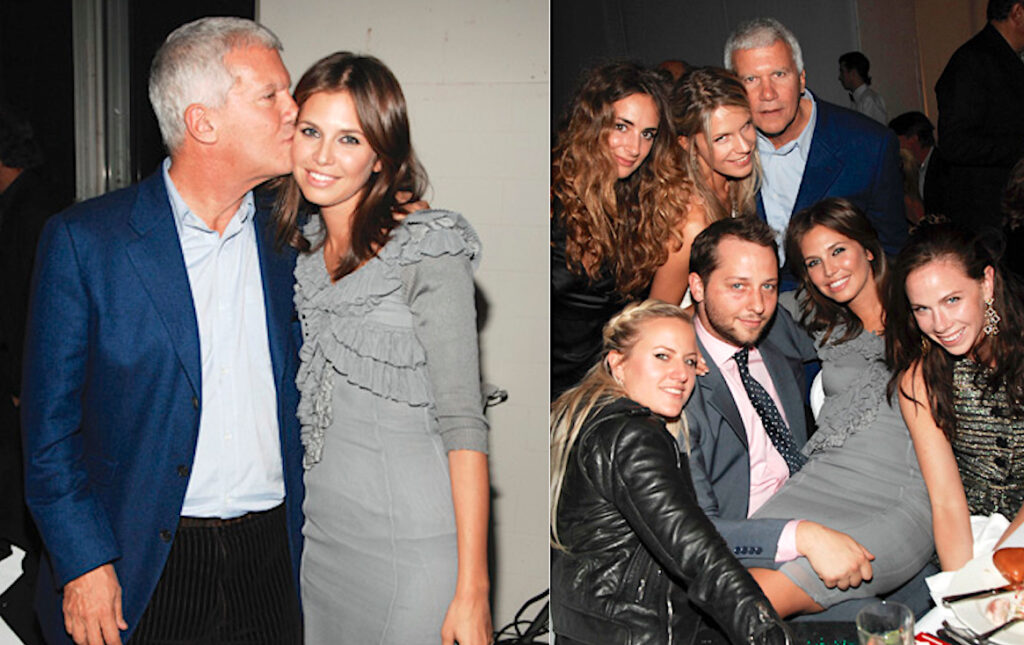
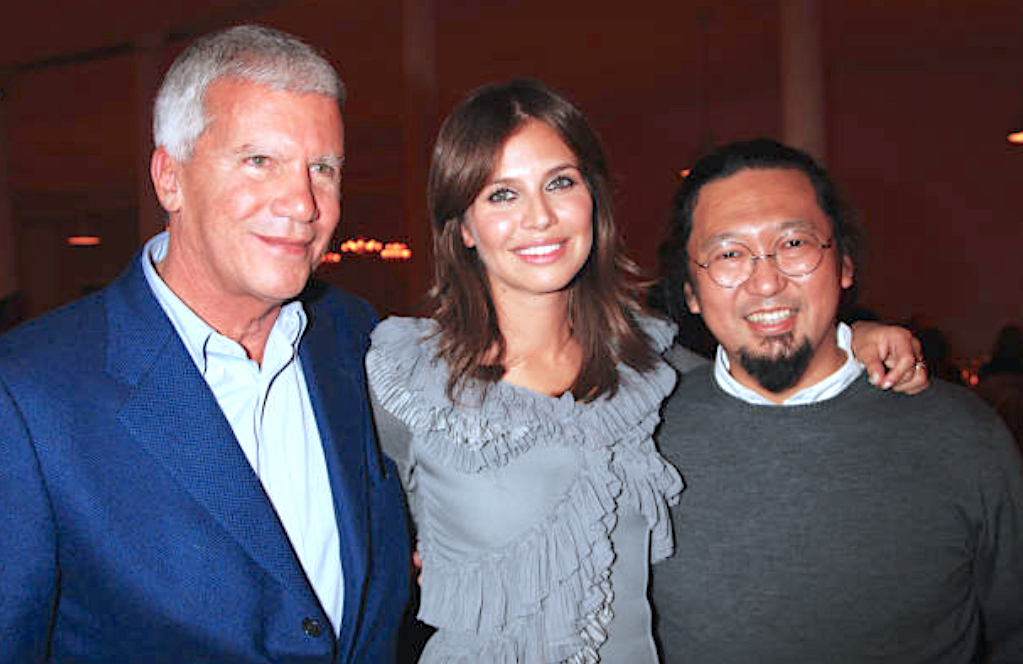
see:
https://www.artforum.com/diary/kate-sutton-on-openings-for-the-garage-and-gagosian-in-moscow-21187

When the global financial crisis hit, later that year, Russian commissions kept coming in. Gagosian mounted a flashy exhibition at a former chocolate factory in Moscow. The timing was awkward: Russia had recently invaded its neighbor Georgia. But gallery staff vowed that this distraction wouldn’t dampen the mood, assuring a reporter that international clients hadn’t “canceled their trips because of the attack.”
Abramovich, along with his then girlfriend, Dasha Zhukova, began collecting on an enormous scale. According to The Art Newspaper, in a single week he spent a hundred and twenty million dollars at auction, buying a Francis Bacon triptych and a Lucian Freud. In 2015, Abramovich and Gagosian threw a New Year’s Eve party together, in St. Barts, that was reportedly attended by Chris Rock, Lana Del Rey, and Jon Bon Jovi. Abramovich wasn’t the only oligarch Gagosian did business with. He became friends with the financier Mikhail Fridman, whom the European Union has described as having “strong ties to the administration of Vladimir Putin.” (Fridman’s attorneys have denied that this is true.)
Last year, after Russia invaded Ukraine, the New York Post ran a story characterizing Gagosian as “the official art dealer of the Russian oligarchy,” citing his relationships with “Bond villain” types such as Abramovich, Fridman, and the Putin associate Mikhail Piotrovsky, who directs the Hermitage Museum. The U.S. Treasury Department’s Financial Crimes Enforcement Network released a warning that the art market is “attractive for money laundering by illicit actors, including sanctioned Russian elites,” and federal prosecutors began subpoenaing auction houses.
Shortly after the invasion of Ukraine, an e-mail went out to Gagosian employees. It said that “you absolutely cannot sell to a sanctioned person,” the source who has worked at the gallery told me. “You cannot sell to their fake business in Liechtenstein. You cannot jeopardize the gallery to sell to these people.” Suddenly, the mantra was “Know Your Customer.” But this directive seemed a little disingenuous—if there is one thing Larry Gagosian has always known, it is his customers. When I asked him about Abramovich, he shrugged and said, “He’s a nice guy.” There was a bit of a language barrier, but they enjoyed hanging out. “He came over to my carriage house and bought, like, half of the things in my house,” he continued, then emphasized, “When I was selling to him, there was no sanction. There was no war.”
From our conversations, I got the sense that Gagosian does not feel particularly burdened by such ethical conundrums, and that he adheres to a simple rule. If it’s illegal for him to do business with someone, he won’t. Otherwise, it is not for him to parse the moral credentials of potential buyers. He has sold art to Sam Waksal, who pleaded guilty to securities fraud, bank fraud, obstruction of justice, and perjury; Peter M. Brant, who served six weeks in federal prison on charges related to tax documents, then celebrated his release with a dinner at Gagosian’s house; Leon Black, who stepped down as the board chairman at MoMA after artists protested his close financial ties to the serial child predator Jeffrey Epstein; and Steve Cohen, whose hedge fund pleaded guilty to so much insider trading that it had to pay a $1.8-billion fine. (In 2004, Gagosian himself—along with his gallery—paid four million dollars to settle a federal lawsuit over unpaid taxes.) In recent years, Gagosian has also been doing a lot of business in the United Arab Emirates, a country with an appalling record on human rights and an appealing quantity of collectors.
I asked Gagosian if there is anyone he would refuse to deal with on ethical grounds. He said that he might not do business with a “convicted murderer,” but that he doesn’t want to draw such lines when it comes to lesser allegations. “If the money is correct, if the transaction is correct, I’m not going to be a moral judge,” he said. Gagosian pointed out, rightly, that he wasn’t alone in having done business with the oligarchs: “Everybody did—the auction houses, the top dealers.”
In a 2019 interview with Artnet, Stefania Bortolami, the Tribeca gallerist, declared, “There’s not enough ‘good money’ in the world to sustain this art world.” She speculated that “very few artists are going to have the guts to say no to millions of dollars.”
The art market is a star system like any other, and most artists, including many very good ones, do their work and live their lives far from the galaxy of Gagosian. If they are lucky enough to have representation, their work is shown by small or midsize galleries. Being supported by a mega-gallery like Gagosian is a gift, but it’s complicated: such artists must produce work while this rowdy bacchanal of late capitalism plays out around them.
In a 1989 interview, Gagosian spoke with impolitic frankness to Anthony Haden-Guest about the ways money can ruin an artist. Some artists get “really fucked up” by financial success, Gagosian said, and “start getting interested in antique furniture and wine and adding another wing to the house in the Hamptons.” (Money creates taste for artists as much as for their patrons, it would seem.) Such artists also become burdened with a new set of expectations, Gagosian continued: “You’ve got to keep the dealer happy. You’ve got to keep the pipeline loaded. And the marketplace doesn’t tolerate a lot of experimentation.”
For some artists closely associated with Gagosian, there is no apparent disconnect between the clamor of materialism and the art work itself. Admirers of Koons might claim that his glossily reflective sculptures of balloon toys are embedded with a sly social commentary on their multimillion-dollar price tags, and, for both the artist and his collectors, there must be some consolation in the idea that they’re in on the joke. Last year, Damien Hirst had a show at a Gagosian gallery in London. Jonathan Jones, a critic at the Guardian, wrote, “This is art for the penthouses of oligarchs who look out of their windows and ask who really cares about all those pieces of meat walking about down there.”
But for other artists it can be unsettling to be reminded that some of your most devoted collectors are people whose politics and life styles you find repugnant. “I don’t actually think any work by a living artist should be more than a million dollars,” Cecily Brown once told the Financial Times. “I think it’s sick. It’s out of control. It’s about big-dick contests.” Brown, whose paintings have sold at auction for more than six million dollars, has acknowledged that a relentless focus on prices could be inhibiting. “I can’t come in here painting, thinking, ‘Oh, this is worth . . . ’ ” Part of her process, she continued, is to sometimes destroy her work along the way. “I don’t think ‘This could be $350,000’ before I slash it.”
Jenny Saville said that she finds it easy to leave the pressures and perversions of commerce at the studio door. In 2018, her monumental nude self-portrait “Propped” sold at Sotheby’s for $12.4 million—the most ever paid for a work by a living female artist. Of course, this was the secondary market, so Saville saw none of that upside herself. But higher resale statistics generally drive up your prices in the primary market. Even so, Saville told me that such benchmarks are extrinsic to her artistic process. “It wasn’t a better painting the day after the auction than it was the day before,” she said. “The noise—I got rid of all that very young. I learned quickly that that’s not where it’s at. It’s a rainy Tuesday, and you’re making a certain mark in a certain way. That’s all that matters.”
I wondered how easy it was for other artists to maintain true north amid the powerful magnetic forces of the marketplace—to keep experimenting, to prevent their creative energies from becoming dissipated by their own wealth. (The Guardian review of the Hirst show—a survey of the formaldehyde-filled vitrines he’s been making for three decades—lamented the artist’s “progress from raw young punk to pretentious money-lover.”) Then again, Picasso didn’t exactly live like a monk, and he remained protean and vital until his death. Nearly five hundred years ago, Giorgio Vasari wrote about the lavish prices the great artists of the Renaissance commanded, and the manner in which they jockeyed for wealthy sponsors. Perhaps it was ever thus. In Twombly’s later years, when he was ill with cancer, Gagosian offered his private jet so that the artist could travel between Virginia and Italy in comfort. In Gagosian’s telling, Twombly would say, “The only two things I like are painting and flying on Larry’s plane.”
One explanation for Gagosian’s continued dominance after five decades in the industry is that, for a white man of a certain generation, he has been surprisingly adept at shifting with the times. He still has the vibe of a nineteen-eighties corporate raider, and he pointed out to me, more than once, that he is “not very P.C. by nature.” Yet he hasn’t been cancelled, or sidelined as a dinosaur. And soon after stories emerged online, in 2020, alleging predatory sexual conduct by one of his longtime directors, Sam Orlofsky, Gagosian fired him, and sent the gallery’s staff a memo saying that such behavior wouldn’t be tolerated. “I didn’t see it coming, I really didn’t,” he told me. He knew that Orlofsky had a certain life style (“Sometimes I couldn’t get him on the phone till three in the afternoon”) but maintains he had no inkling that his trusted director might have been harassing women—including staffers at the gallery. Gagosian might disdain bureaucracy, but by 2018 he had come to recognize that a muscular H.R. division was needed to keep everyone on track. (Orlofsky did not respond to requests for comment.)
The past several years have occasioned an overdue reckoning on questions of race and representation in the art world, and Gagosian has made moves that many people I spoke to praised as shrewd. In 2021, he hired Antwaun Sargent, a young Black writer and curator. Gagosian was uncharacteristically forthright about his motivation. “I may not see things as well as I saw things 20 or 30 years ago,” he told the Times, adding, “With somebody like Antwaun, I’m able to refresh my perspective.” Like John Richardson before him, Sargent was an unconventional hire; he’d never worked as a dealer. Sargent, who told me that he has a “pretty good barometer around tokenism,” sensed that Gagosian was sincere in his intentions, and he immediately warmed to the no-bet-too-big ethos of the gallery. For the début show, in Beverly Hills, of the Black painter Honor Titus—a series of paintings depicting tennis courts—Sargent got Gagosian to subsidize the construction of an actual tennis court on the gallery floor. The paintings sold. Sargent felt pressure not just to show Black artists but to make deals. “I joined a gallery, not a museum,” he said. “The tokenism thing would be to say, ‘O.K., Antwaun, tell me your ideas. You don’t have to worry about sales.’ Instead, they said, ‘Hey, you want to do shows? You’ve got to sell those shows.’ ”
The decision to sign Anna Weyant could also be construed as an example of Gagosian’s ability to adapt. Weyant, who grew up in Calgary and graduated from the Rhode Island School of Design, in 2017, is one of those fledgling talents originally boosted by Ellie Rines, of 56 Henry. As recently as 2019, Rines was selling drawings of Weyant’s on a beach towel at an art fair in the Hamptons, for four hundred and fifty dollars each. But, after selling one piece to Larry Gagosian, Weyant ended up moving to a larger gallery, Blum & Poe (“I was absolutely heartbroken,” Rines said), which raised her prices considerably. Gagosian and Weyant became romantically involved after he started collecting her work but before she left Blum & Poe to join his gallery, and both have been circumspect about discussing their relationship. From the outside, it is easy to suppose that this improbable liaison involves a familiar transaction. But unlike Susan Alexander—the hopeless vocalist in “Citizen Kane” who is promoted to the opera stage by her powerful older lover—Weyant has unquestionable skill. (“She’s a good painter,” Gagosian told me, with his usual linguistic economy.) And Rines, who remains friends with Weyant, said she believes that Weyant’s bond with Gagosian is genuine. Invoking the “mischievous” quality of Weyant’s art—lush studies of female figures, in the manner of Balthus or Currin—Rines said, “She kind of likes to be naughty and subversive, and there’s something naughty and subversive about being with Larry.” The Wall Street Journal, laying it on a bit thick, described Weyant as the “millennial Botticelli,” and there’s little doubt that wealthy collectors in Gagosian’s circle have fuelled the vertiginous escalation of her prices. The Journal quoted Gagosian saying, “I’m just trying to protect her from the big bad wolves.” Talk about being in on the joke.
Late last year, Weyant had a solo show at Gagosian on Madison Avenue. A centerpiece of the exhibition was a large painting of a blond woman, standing on one foot with her arms outstretched; her toes graze a disembodied face lying horizontally at the bottom of the frame—her own face—as if she were pirouetting on it. The model for the painting, Sophia Cohen, is a friend of Weyant’s, and happens to be an associate director at the gallery. Sophia is also Steve Cohen’s daughter. Of course, museums are filled with portraits of noblemen’s daughters. But, as I gazed at the painting, it seemed that Weyant was saying the quiet part out loud.
Issy Wood is a thirty-year-old artist and musician in London. She paints a range of objects (cars, clocks) and details of human figures (teeth are a favorite), and often works on velvet. Her art has a febrile air of detachment. In early 2020, she had a show at a small gallery in New York, which Loïc Gouzer, the former Christie’s executive, attended. “Larry needs your number,” he told her afterward. Gagosian was interested in her work, and arranged to visit her studio, in East London. “It was bizarre,” Wood told me. “This was the guy that, for better or for worse, built the world that I live in as a young artist, and especially as a young painter, and he wanted to come to my disgusting studio.” When he arrived, he moved quietly among the works and didn’t say much. “He was shopping,” Wood said. “Like it was Harrods.”
Gagosian started buying her paintings and displaying them at his home in New York. Top collectors—as attentive as stock pickers to his tastes—noticed, and suddenly her paintings were selling on the secondary market for more than a quarter of a million dollars. “I could feel the hotness of Larry having approved my work,” she recalled. She attributes the surge, in part, to prospectors having heard that she might soon be joining Gagosian—which would drive her prices higher still. “It was insider trading,” she said, sardonically. “It’s an industry with no rules.” She met with Gagosian a few more times, including at the Ritz in Paris. Wood, who is sober, was put off when he urged her to drink and take ketamine. (He says that he was aware of Wood’s sobriety and would “never make such a suggestion,” and denied that he takes ketamine himself.)
Gagosian told Wood that he wanted to mount a show of her work. It was unnerving to be on the receiving end of a charm offensive from “someone who has kind of transcended having to charm,” she observed. “It felt like a necessary inconvenience to him.” She was still procrastinating over whether to commit to a show when the pandemic began. Gagosian seems to hate being alone, and now his famous ability to convene was curtailed. He spent much of the lockdown in Amagansett. Tico Mugrabi and his wife stayed in the guest house, and he told me that, even at the height of the pandemic, Larry never stopped thinking about business.
Gagosian started texting Wood, who was alone in London and feeling isolated herself, and calling her, often multiple times a day. She came to savor these exchanges, and gradually they developed a bond. “I loved speaking to Larry,” she said. To talk to him “was to be in touch with an era I was never a part of—these stories he would tell, with varying degrees of lucidity.” She sent him photographs of works in progress, which he greeted with his standard, nearly monosyllabic affirmations. (Responding to a painting of a faucet: “I love faucets.”) Even so, he had “amazing taste,” she thought, and he could be very funny, and she admired the fact that he was not some to-the-manner-born dandy. “He was also really vulnerable, I think,” she continued. “He’s an extrovert and I think he was very bored.”
Once travel restrictions eased, Wood visited New York. Gagosian offered to throw her a party, and suggested that she invite a bunch of friends. After she produced a provisional guest list, one of his assistants informed her that, apart from the music producer Mark Ronson, Gagosian didn’t recognize the names. Wood felt a momentary flush of embarrassment that her friends weren’t more famous. Gagosian, the assistant wrote, was “happy to host them but would like a little background to familiarize himself.” So Wood supplied him with bios.
Gagosian’s town house, decorated in the sterile fashion of today’s super-rich, resembles an event space in an exceedingly nice hotel: zero clutter, few personal effects. The party’s guest list ended up being a combination of his friends and Wood’s. It was the first in-person celebration many of them had been to since the pandemic began, and the mood was energetic. “I got a little taste of what it would be like to be a Gagosian artist,” Wood recalled. “It was very comforting to be around someone who is having that good a time all of the time.” Weyant was there. Eddie, the butler, served food. Everyone smoked indoors. Lichtenstein, Mondrian, Picasso. Warhol’s “Triple Elvis” over the fireplace. “Larry would keep insisting that I loosen up,” Wood recalled. “He’s, like, an old guy, and he had some crumbs down his shirt and he got so drunk and was making less and less sense, and was screaming at his staff to play Aerosmith.” She paused. “I wasn’t thinking, I hope this is my life.” (Gagosian denies that he was drunk or requested Aerosmith.)
Afterward, Gagosian and Wood continued to discuss the idea of her joining the gallery, but her reservations were intensifying. “Maybe he’s good at speaking to artists once they’re rich,” she said. “But I’ve never seen him do a really good job building a career from the ground up.” The matter came to a head when the two met again at his town house. They sat at an oversized table. An Olympic swimming event played on a silent TV. Wood wanted to know about the gallery’s long-term future, so she asked, “What will happen when you die?”
“What the fuck is wrong with you?” Gagosian exploded. “Talking about my death when we’re trying to have a meeting!” Wood now concedes that this wasn’t very diplomatic. But she wanted an answer, and she was “pissed at him.”
Gagosian told Wood that he wasn’t going anywhere. It may have been that he was succumbing to an affliction that is common among megalomaniacal plutocrats: an inability to imagine a world in which he no longer exists. His friend Diego Marroquin told me that he once proposed that Gagosian sell his building in Chelsea and lease back the ground-floor gallery. Gagosian said that if he did so he’d insist on a fifty-year lease. “I said, ‘Larry, it doesn’t work. You’re not going to be around!’ ”
Gagosian protested to Wood, “I’m in the best shape of my life. No one understands your work like I do. I want to make you a star.” When she wasn’t won over by this line of argument, he pivoted, saying, “I’ve done so much for you!” He mentioned that he’d bought her work—he owns about ten pieces—and displayed it in his house. As Gagosian was raising his voice, Wood noticed that Eddie had tactfully exited the room. Eventually, she excused herself to go to the bathroom. She sat on the edge of the toilet, staring at the room’s elegant marble design, in no hurry to return. Then her phone lit up with a text from Gagosian, and then another, and then another. He had sent the same text three times (by accident, she thinks):
The other galleries you are considering will most likely go out of business before my demise.
When Wood came out of the bathroom, Eddie informed her that Gagosian had gone to take a nap. She left the town house and ended up joining a smaller gallery, Michael Werner. “I think she’s a talented woman,” Gagosian told me. “Why she went sideways like that I have no idea.” He seemed genuinely hurt and exasperated, and wondered aloud why she would “bite the hand that feeds her.” But he repeated several times that she is a good painter. In Amagansett, before I ever broached the subject of Wood, Gagosian had shown me a small canvas of two Marilyn Monroes that she had painted, and said, proudly, “A friend of mine gave me this, as a gift.”
Gagosian’s board meets twice a year, at the town house. “Everybody sits around one big table,” Glenn Fuhrman, who is a member, told me. People make presentations on technology, business, fashion. Jenny Saville, who is also on the board, said, “It’s a big think tank for him.” But nobody seems to believe that the board could take over should he die or retire.
Can Gagosian survive without Larry? When evaluating art, he has tried to pinpoint not just the works that might retain value but the ones that will endure—the masterpieces that will outlive us all. There are those who believe that the gallery could come to resemble a luxury brand: Chanel after Coco. There has been speculation in recent years of a possible acquisition by the French conglomerate L.V.M.H. (Gagosian says that it isn’t happening.)
The Gagosian brand unquestionably has tremendous value, and a desirable international footprint, but so much of what has made the gallery thrive is Larry’s own network and eye and persona. The art historian Avis Berman once described him by twisting a line from “Coriolanus”: “He was the author of himself and he had no other kin.” Jean Pigozzi put it in starker terms, saying, “If one day Larry goes, or retires, or whatever, I don’t know what you’re buying.”
It’s similarly unclear what will happen to Gagosian’s personal collection, which includes a breathtaking assortment of twentieth-century masterpieces. When I asked Tico Mugrabi what might become of these works, he joked, “He wants to take it with him and do what the Egyptians do.” Gagosian could set up his own museum, like the late Eli Broad, whose collection is now housed in a sleek white structure twelve miles east of the Los Angeles patio where Larry once peddled posters. (Broad acquired some eight hundred works—forty per cent of his collection—through Gagosian.) Among the very wealthy, a private foundation has become a fashionable way to present art and get a tax writeoff at the same time. These supposedly public-facing collections can be farcically inaccessible. Peter M. Brant, Gagosian’s friend and client, opened one location of the Brant Foundation Art Study Center down the road from his Greenwich, Connecticut, estate, in a converted 1902 farm building that formerly housed an indoor tennis court. The collection is tax exempt, despite admitting visitors by appointment only and having no signage welcoming the public. (When I tried to plan a visit to the Greenwich location, earlier this summer, I learned that it is “temporarily closed.”)
Patty Brundage’s sister Susan, who also worked for Leo Castelli, told me, “In our day, you had collectors, but they anticipated making gifts to the museums. They weren’t building temples to themselves.” These temples, however, may be preferable to the fate of much art that is treated like an asset. Some major collectors now buy and sell art so frequently, and in such enormous quantity, that little of it gets displayed at all. Several years ago, the Mugrabis had a legal dispute with a fine-art storage company in New Jersey, and it emerged that the family had stashed nearly fourteen hundred works there. The Geneva Freeport—a tax-free zone in Switzerland where art is stored, for a fee, in climate-controlled, highly secure facilities—is thought to contain more than fifty billion dollars’ worth of art and antiquities, including works by van Gogh, Picasso, and Leonardo da Vinci. It would be one of the biggest museums in the world if it were open to the public. “More and more art disappears into loading bays in Switzerland,” Irving Blum told me. One perverse outcome of the hysterical inflation of art prices in the past half century is that great works end up reduced to stock lists, packing orders, lines on a piece of paper.
There is an extraordinary scene in the 2018 documentary “The Price of Everything” in which Gerhard Richter walks into a show of his work at the Marian Goodman gallery. “I would prefer to see it in a museum,” he says, surveying his paintings. “Not in a private collection.” Gesturing to one of his canvasses, he murmurs, “It’s not good when this is the value of a house. It’s not fair. I like it, but it’s not a house.” With a shrug and a laugh, he says, “Money is dirty.”
It is a nice sentiment. But Richter is now one of the most expensive living artists—a single painting can sell for thirty million dollars or more. Most museums cannot afford to buy a Richter. During our lunch at Kappo Masa, Gagosian told me that he would like to see his own collection end up in a museum that is accessible to the general public. If he follows through on this impulse, it will be a gesture rich in irony—because elevating private interests, private parties, and private ownership may be his ultimate legacy in the art world. Recently, the Whitney Museum sold the building it had occupied for decades at Madison and Seventy-fifth, not far from Gagosian headquarters. The new owner is Sotheby’s.
(End)
Comments on the above article:
1. With an international network of real estate (read overhead) and a client list of global rich people, Gagosian became a massive art distribution channel. Any industry has a supply chain and though we don’t like to use such terms for artists, it was only natural that Gagosian’s expanded distribution would affect the way artists behaved within the supply chain. It’s an axiom of industry supply chains that they balance each other out. The rise of big box retailers caused many mergers in the consumer packaged goods industry so manufacturers and retailers would have equal clout in bargaining with each other. Something similar is happening with artist’s studios and galleries.
2. It’s fair to say, though, that one way Gagosian has transformed the art business is by normalising poaching. Many artists have clearly absorbed the idea that loyalty is sentimental and that, in a free market, they should always keep an eye out for a better deal.
3. Learning from Gagosian
Art dealing is now at a scale that serves a certain type of artist. Those artists are increasingly bringing the functions a dealer used to provide in house. The studio of a successful global artist, the kind whose work can fill the Gagosian distribution system, is now a medium-sized business all its own. Increasingly, these studios have professional management of one kind or another.
Cecily Brown may have left Gagosian but she still relies on her former Gagosian director (now at an agency serving artists) to manage her gallery and museum relationships. Could Brown have developed the studio practice she now has without having passed through Gagosian Gallery? Sure. Paradoxically, what she seems to have learned from working within the Gagosian empire is that she should control her own distribution directly. Put another way, Brown seems to have learned to be unapologetically self-interested from a person who feels no need to defend his self-interest.
Direct selling through e-mail in May 2020, Deborah McLeod, Senior Director at Gagosian: 2001 work by Cecily Brown for 5.5 Mio US$.
Through May 10, 2020
gagosianviewingroom.com
Explore Now
It’s an iconic masterpiece that looks back in dialogue with our history and will hold up for generations to come.
— Deborah McLeod, Senior Director at Gagosian
Cecily Brown, Figures in a Landscape 1, 2001, oil on linen, 90 × 100 inches (228.6 × 254 cm)

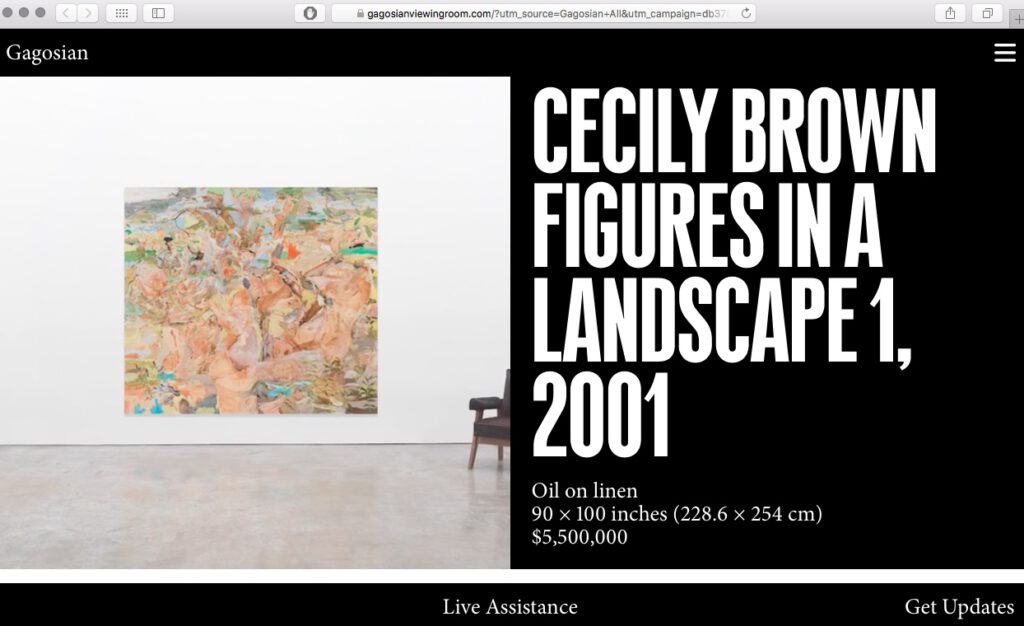
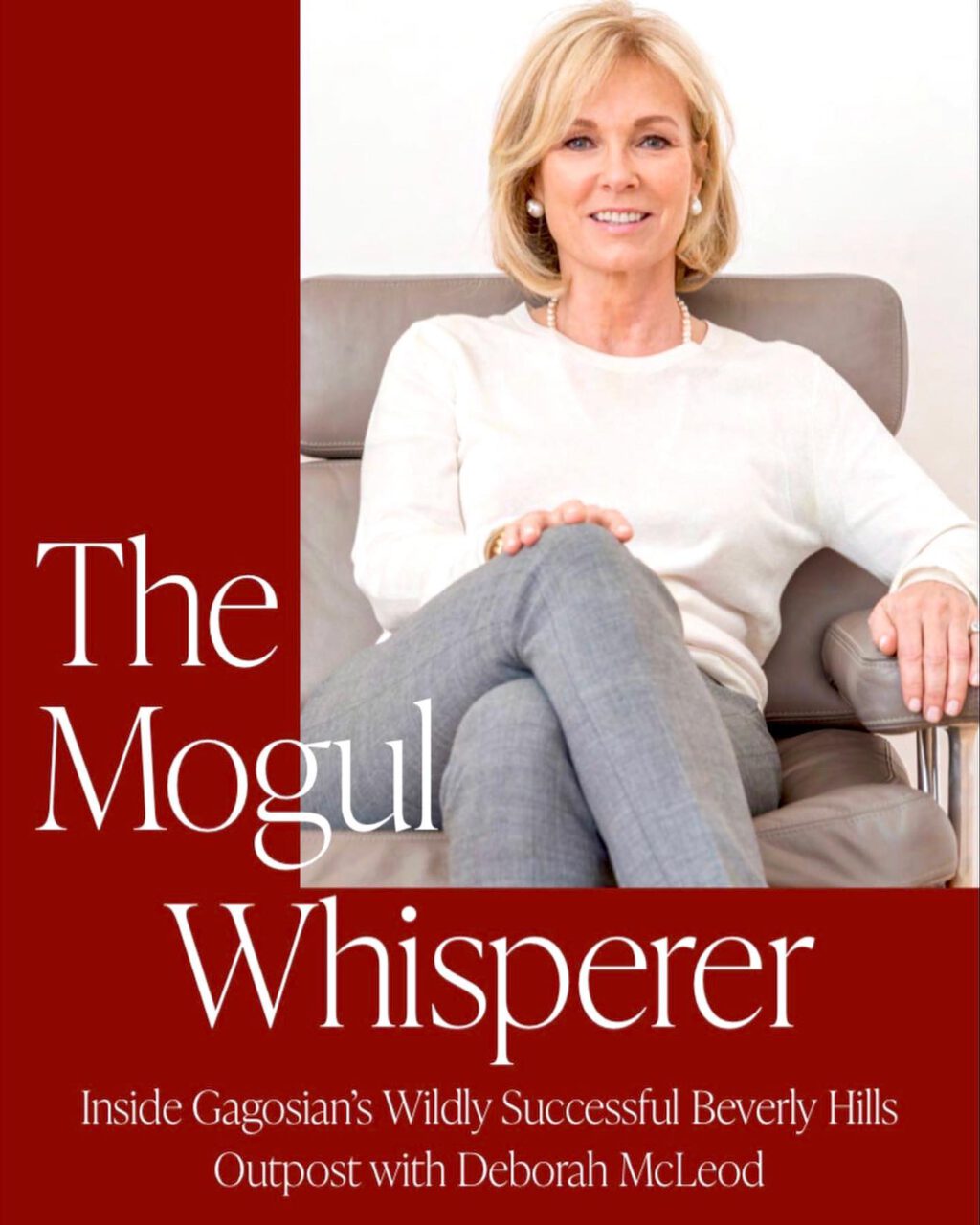
4. Gagosian’s salaries are among the best in the industry and employees earn a 10 percent portion of the gallery’s commission when they close a deal. Bonuses are awarded to those who lure prime artists to the gallery, and those employees even get 10 percent of that artist’s sales for the next year. Each employee is reportedly assigned to manage an artist, while collectors are assigned to whomever they dealt with upon first contact.
Amendment to point 4.
April 2020
“Gagosian, like most businesses, is facing an unprecedented time due to the global Coronavirus pandemic.” said Virginia Coleman, a spokeswoman for the company. “It is our hope that these reductions will help ensure the gallery stays strong.”
Gagosian employs roughly 250 people and has 5 spaces in New York, one the cities hardest hit by the coronavirus. The gallery would not confirm exactly how many workers will be impacted, or what percent salary reduction staff would receive.
In a letter obtained by ARTnews, Larry Gagosian told employees at the gallery that the salary reductions would be “uniform and comprehensive.” Employees making less than $150,000 would receive a 10 percent pay cut, and those making more than $200,000 would receive a 20 percent reduction.
“I have great long-term confidence in the Gallery,” Gagosian wrote. “At the same time, we – like most businesses – have new issues to face. Naturally, I have given much thought to how best to manage the Gallery through this period.”
(End)
Up-date 2023/8/15
Getting the Picture
Patrick Radden Keefe’s Profile of the art dealer Larry Gagosian brought to mind an experience I had as an observer of the beginnings of the contemporary-art-market boom (“Money on the Wall,” July 31st). In November, 1964, I went to the vernissage for Andy Warhol’s “Flowers” show at Leo Castelli’s Upper East Side gallery. This was the initial exhibition of what would become some of Warhol’s most ubiquitous imagery, appearing on everything from shower curtains to the sides of buildings. The large silk screens displayed in the gallery were on sale for four hundred dollars apiece; the smaller versions were two hundred. (They now sell for millions.) At the time, I was a young movie-industry press agent, and the rent of my starter apartment, on Sixty-first and Lexington, was sixty-eight dollars a month. I could hardly afford to buy anything shown that night—but I was told that, if one asked (and got approved), one could purchase a twenty-four-by-twenty-four-inch print for ten dollars.
I decided to try to buy a print, which was a variation on the mailer that announced the show. Castelli, Warhol, and David Whitney—who would go on to become a prominent curator but was working for Castelli at the time, and whom I knew through a friend of a friend—were holding court at the front of the gallery. I went up and asked Whitney if I could purchase one of the prints. He nodded and pointed at me; Castelli said a few words to Warhol; Warhol looked me over. More nods all around, and then I heard Castelli tell Whitney to go get a print. When I retrieved the ten-dollar bill I had in my wallet, Castelli averted his eyes, apparently reluctant to handle actual cash. Whitney seemed unsure if his role at the gallery included cashier responsibilities. Finally, it was Warhol who spoke up. “Take the money, Leo,” he said. “That’s what it’s all about.”
Rudy Franchi
Los Angeles, Calif.
https://www.newyorker.com/magazine/2023/08/21/letters-from-the-august-21-2023-issue
A rare opportunity to understand the cozy relationship between auction house and Gagosian. Christie’s asked Gagosian to sell a Kooning painting via Art Basel 2023. Check also the “Special Notice”, below.
Documented on ARTnews, June 13th, 2023, see the link.
Quote:
Meanwhile, at the Gagosian booth, a sales associate quoted the price of de Kooning’s Untitled III (ca. 1978) at $33 million; that painting notably failed to sell at Christies in November. As ARTnews reported at the time, the painting, which Christie’s guaranteed, had an asking price over $35 million and was declared a “pass” after a mere minute on the block. In the post-sale press conference, Christie’s executives said that the auction now owned the painting. Gagosian gallery confirmed that the painting, now in its booth, is on consignment; assuming it hasn’t sold between November and now, the consignor is most likely Christie’s. (The gallery did not return a request for comment by press time.) Other dealers said it is not unusual for auction houses to consign works to dealers’ booths at art fairs.
more @
https://www.artnews.com/art-news/news/major-artworks-sold-art-basel-2023-1234671376/
Quote:
More painful still, Willem de Kooning’s Untitled III (around 1978) failed to sell. After a mere minute on the block, it became clear the painting wouldn’t get close to the estimated $35 million price tag and the auctioneer declared it a “pass.”
https://www.artnews.com/art-news/news/christies-20-21-sales-bring-in-421m-1234647141/
Read also the “Special Notice” by Christie’s at the lot:
SPECIAL NOTICE
On occasion, Christie’s has a direct financial interest in the outcome of the sale of certain lots consigned for sale. This will usually be where it has guaranteed to the Seller that whatever the outcome of the auction, the Seller will receive a minimum sale price for the work. This is known as a minimum price guarantee. This is such a lot.
https://www.christies.com/en/lot/lot-6397624
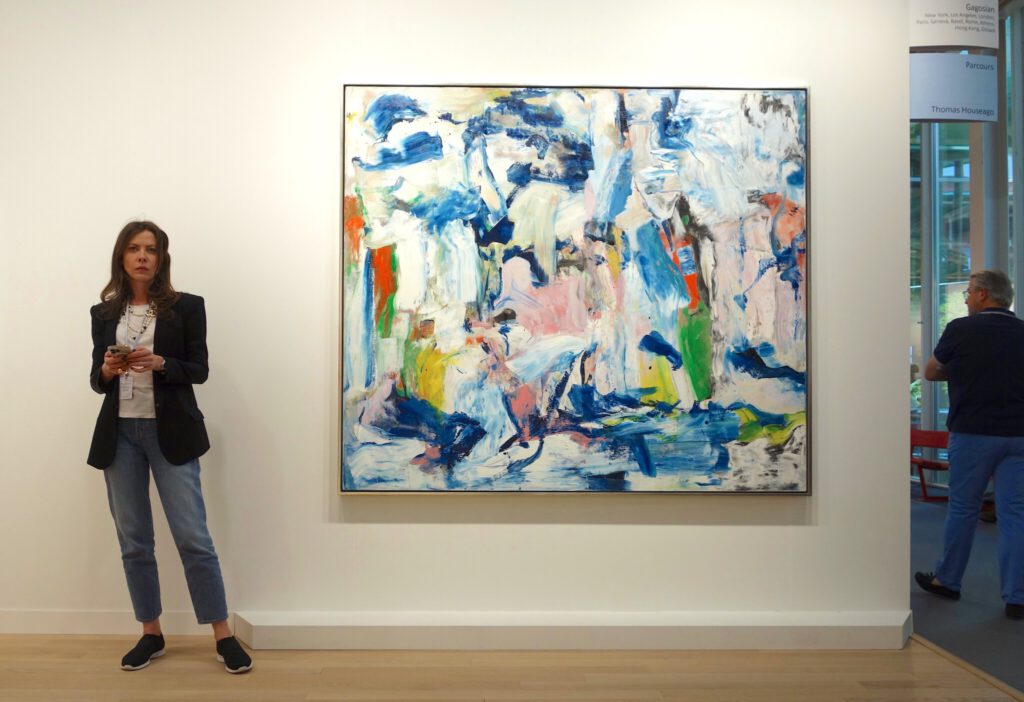

Check:
Art world darling, cool Kenny Schachter @ Art Basel
アート界の寵児、クール ケニー・シャクター @ アート・バーゼル
https://art-culture.world/articles/kenny-schachter/
Check:
Maurizio Cattelan @ Gagosian New York 2024
https://art-culture.world/articles/maurizio-cattelan-マウリツィオ・カテラン/
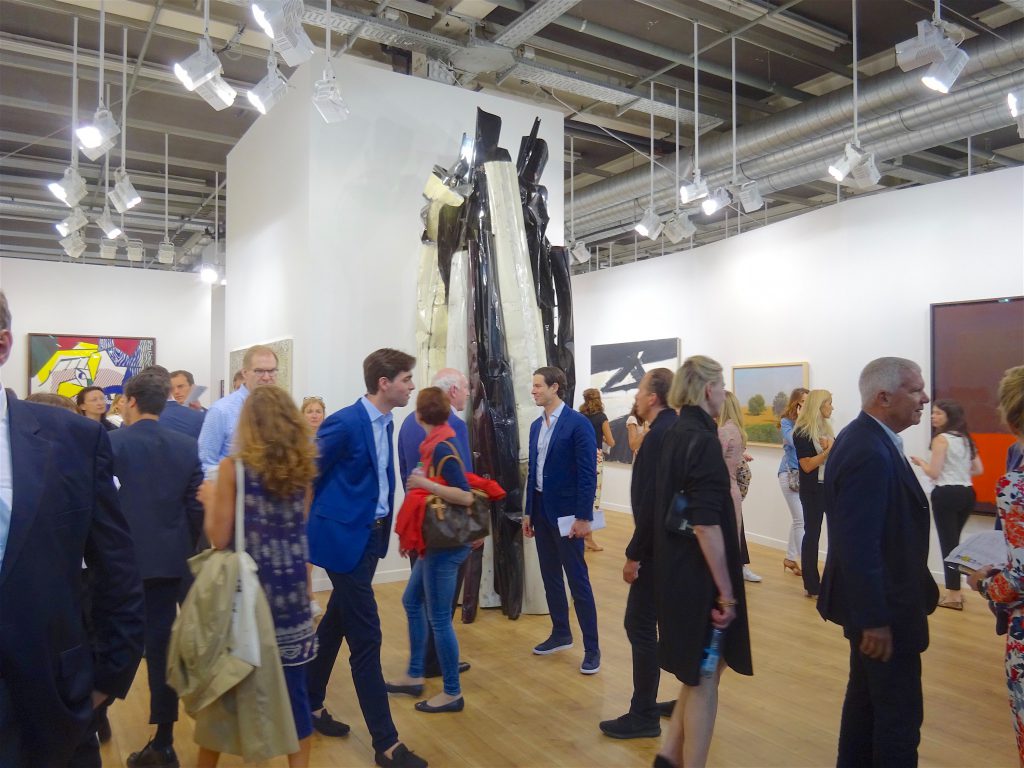
Art Basel booth 2019
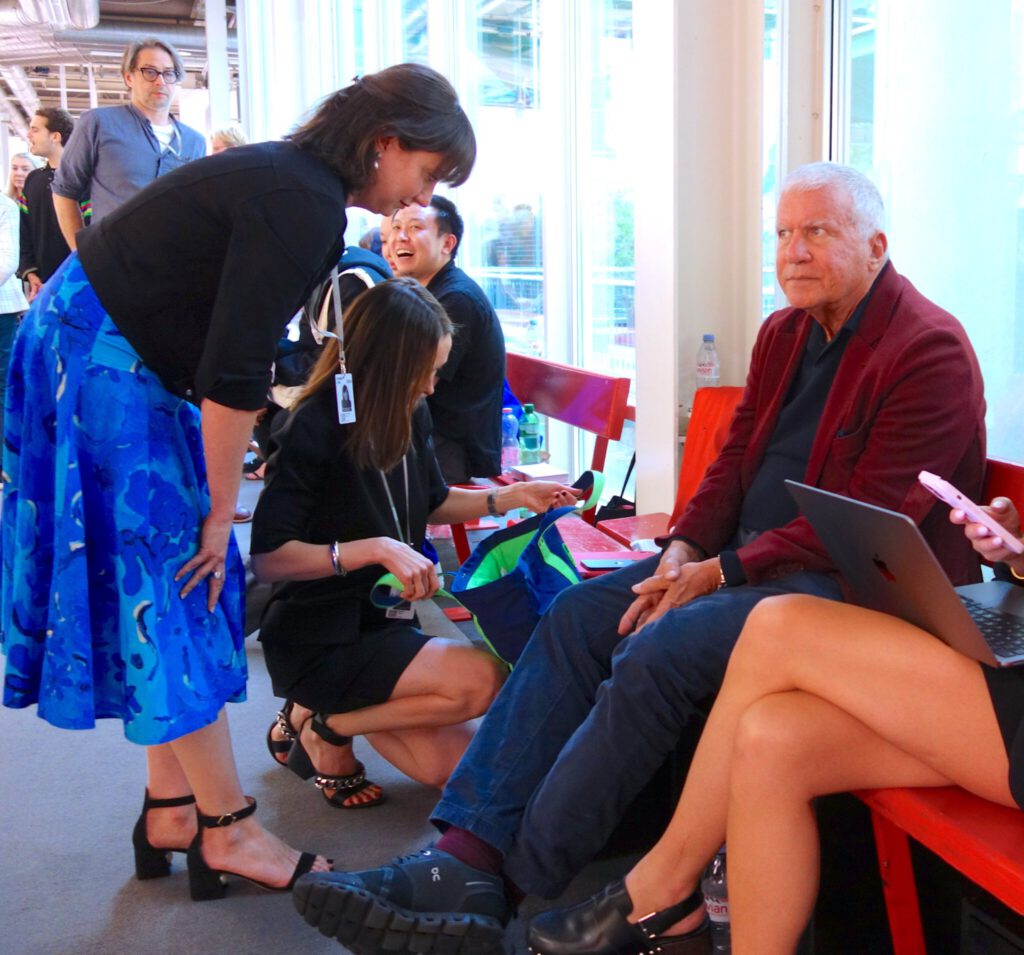
This is an extension of my past articles, which I, as a Japanese artist, published here on ART+CULTURE, see the links. It can be art-re-contextualized also as a body of work, still in progress. This text on this page has to be understood as part of my artistic practice, in this context called “appropriation art”. No commercial interests are involved. Creative Commons Attribution Noncommercial-NoDerivative Works. Photographs have to be understood under the terms of courtesy creative common sense.
